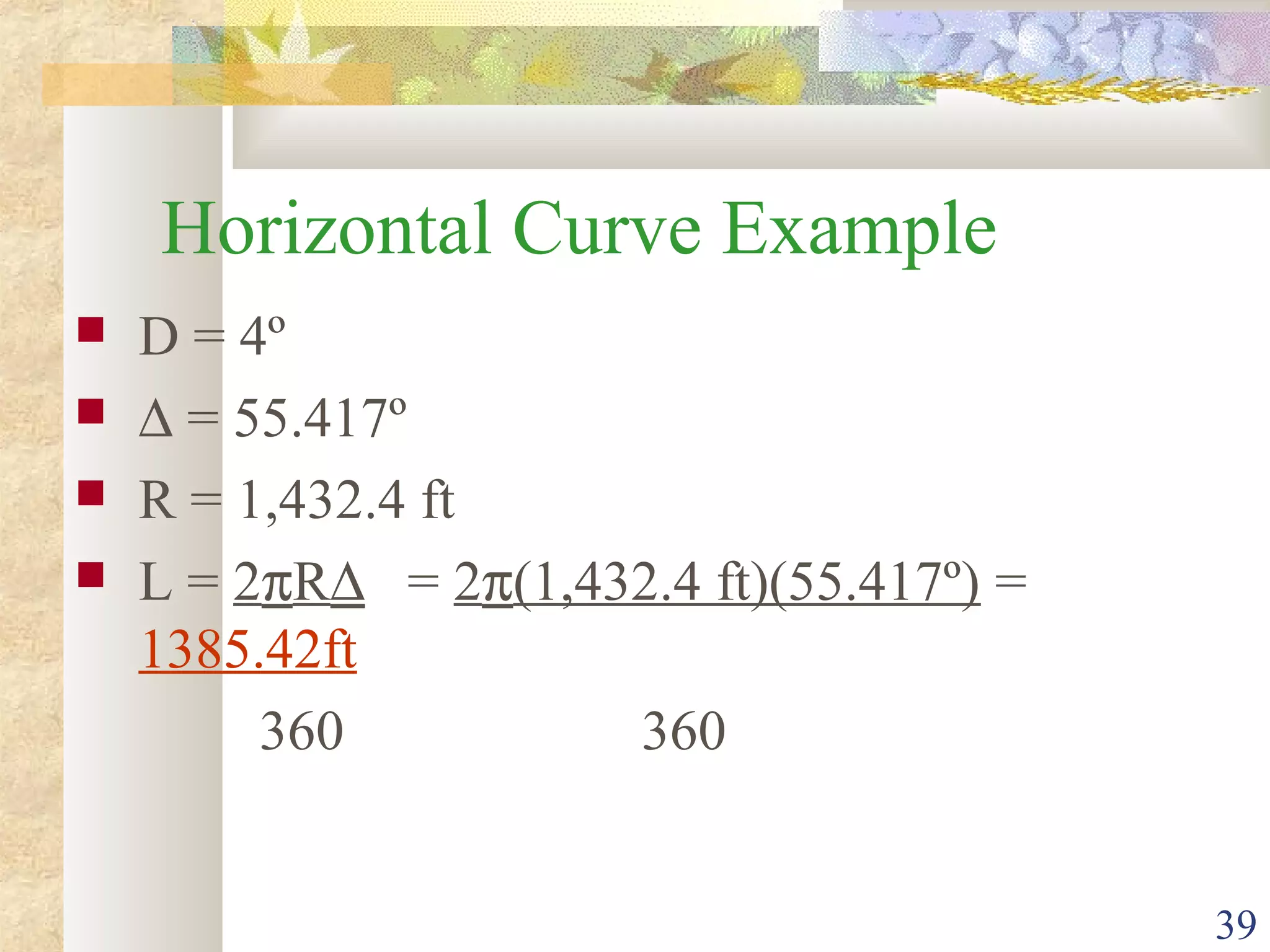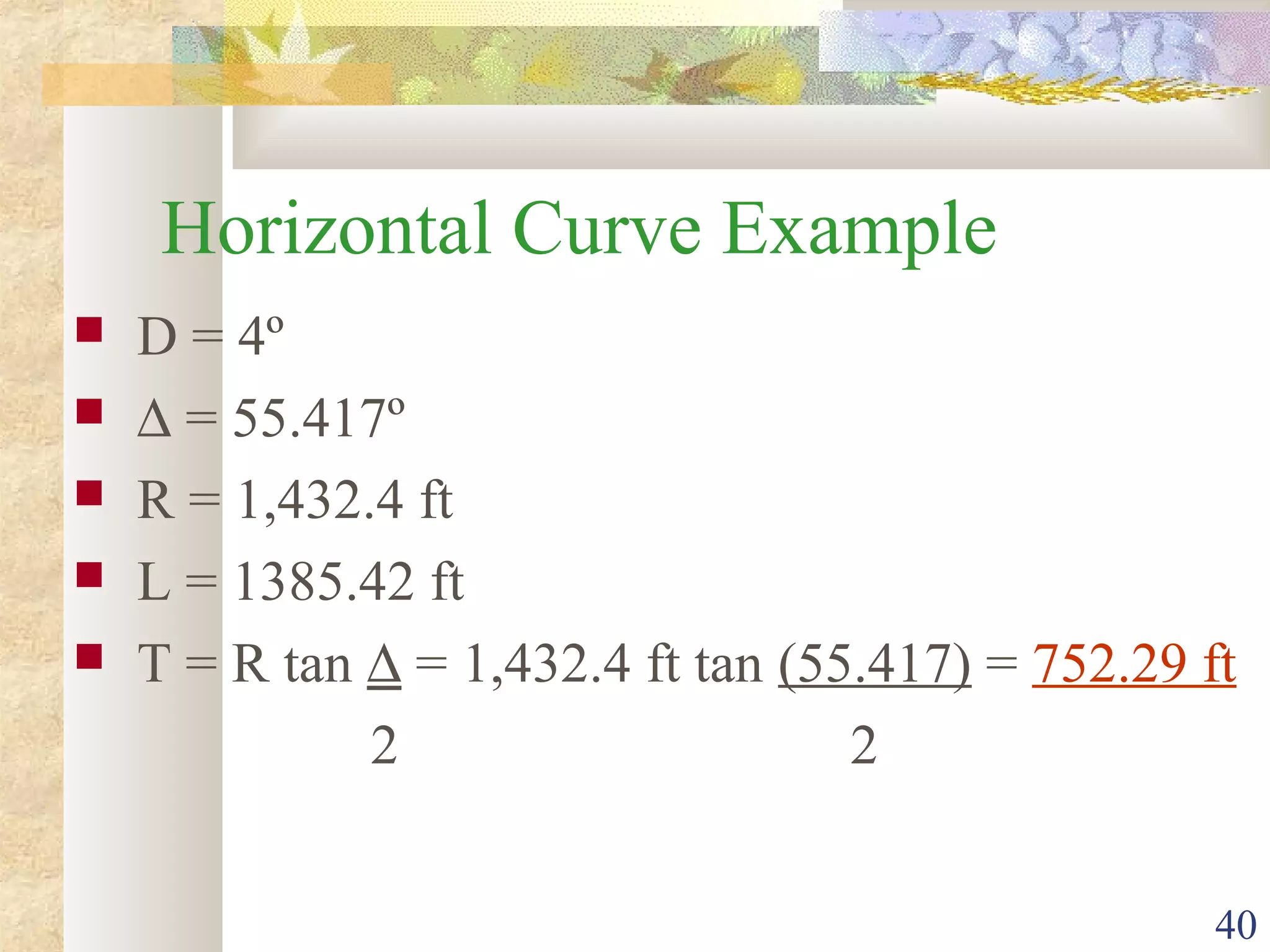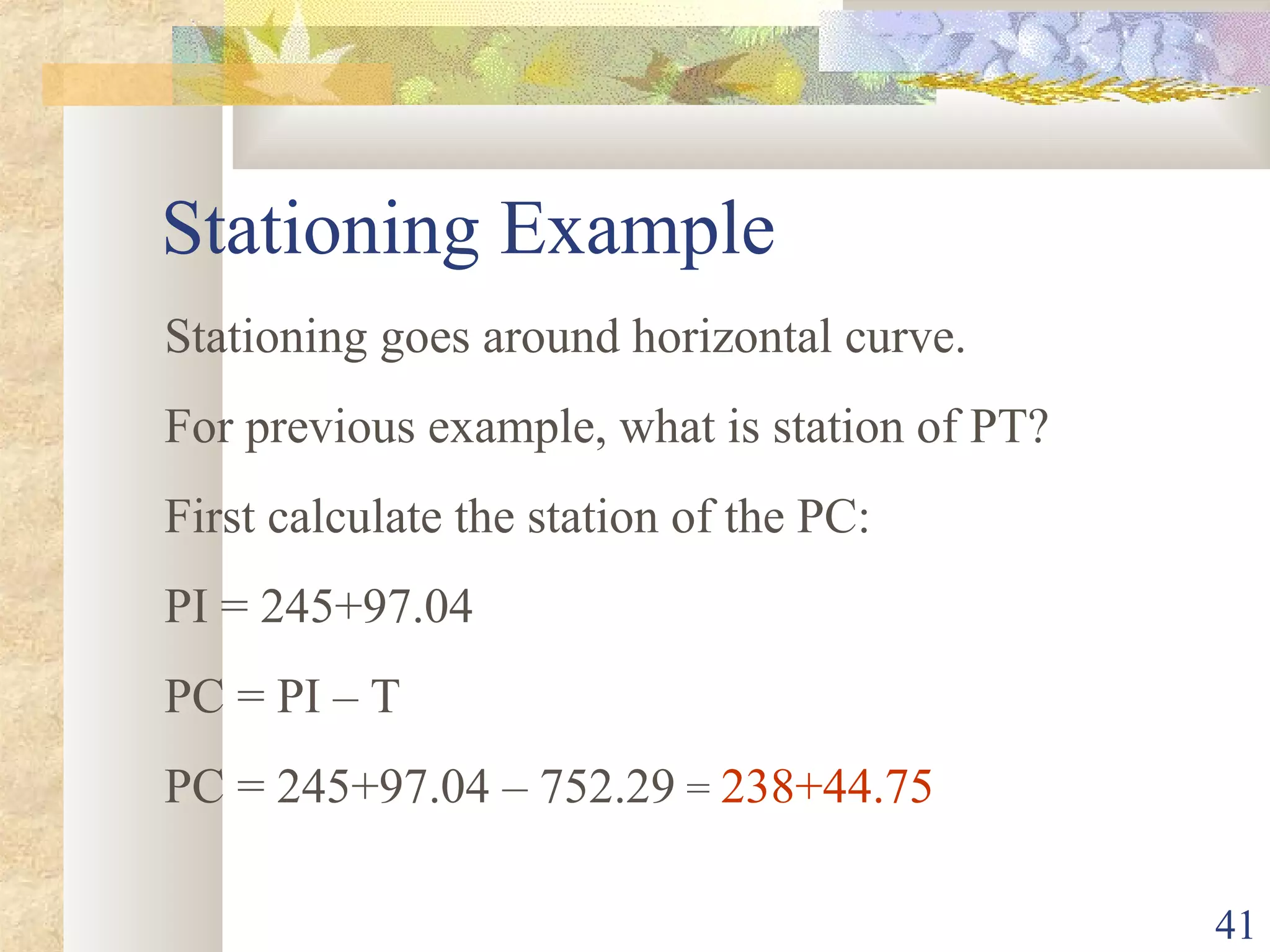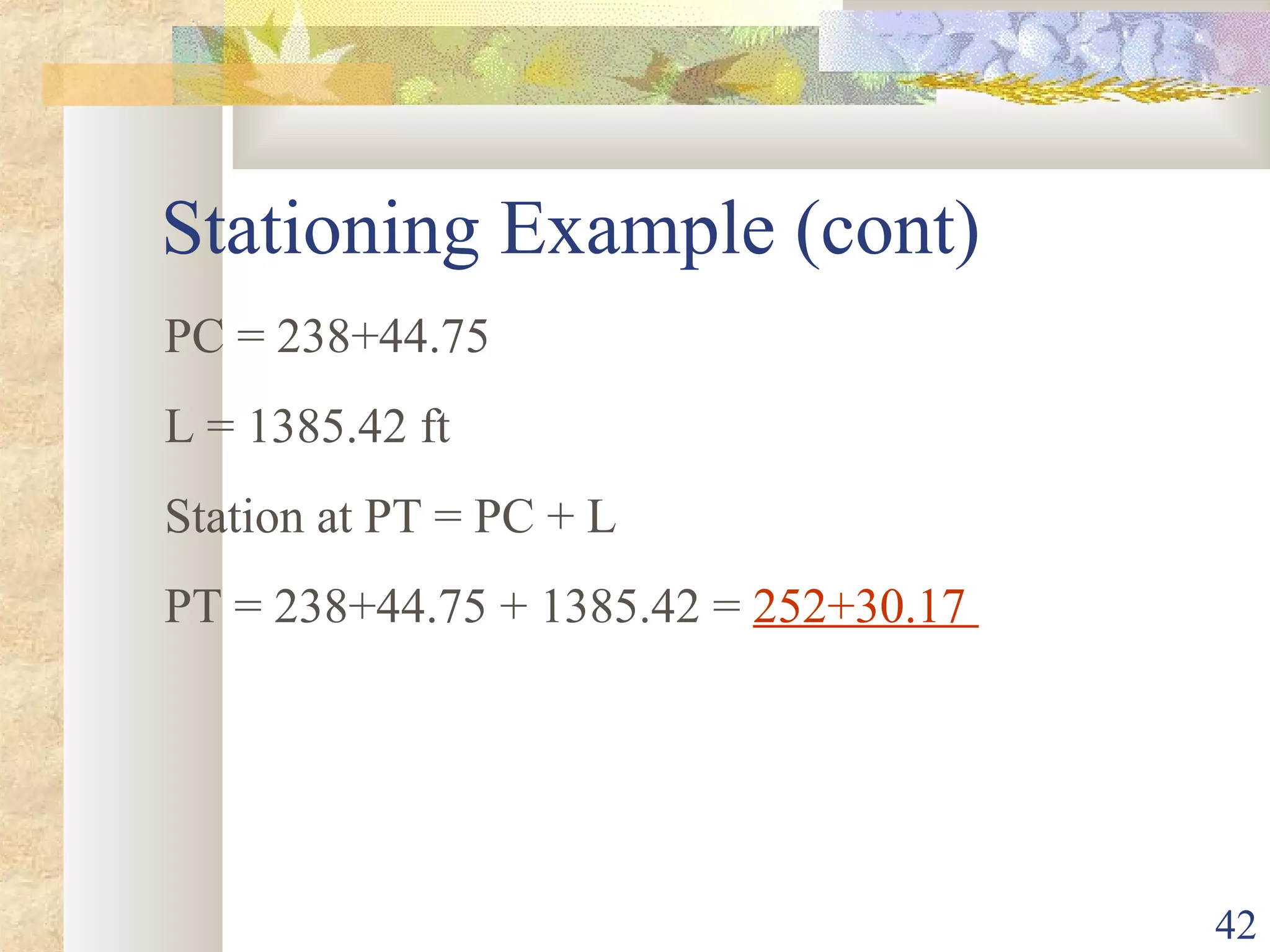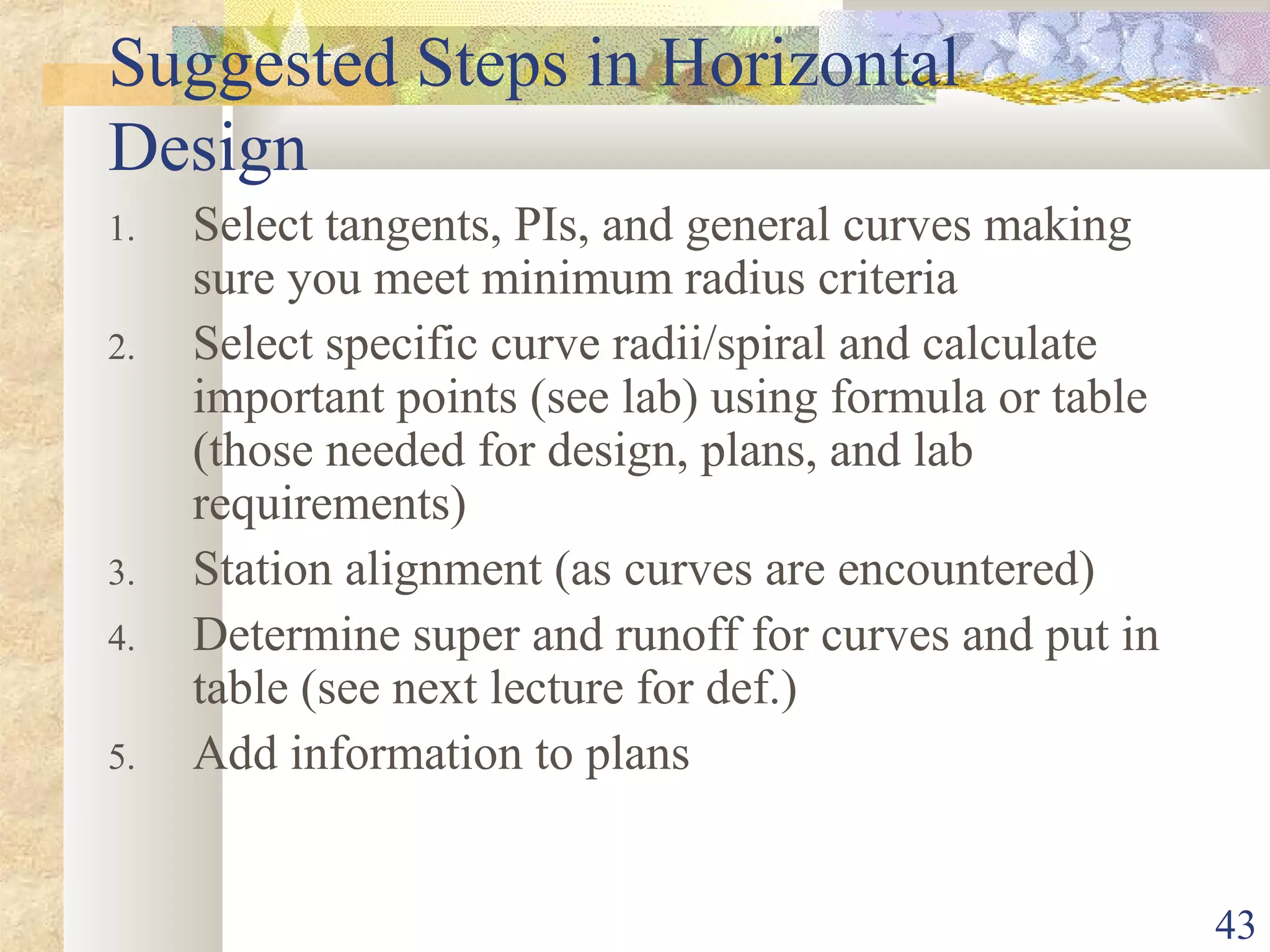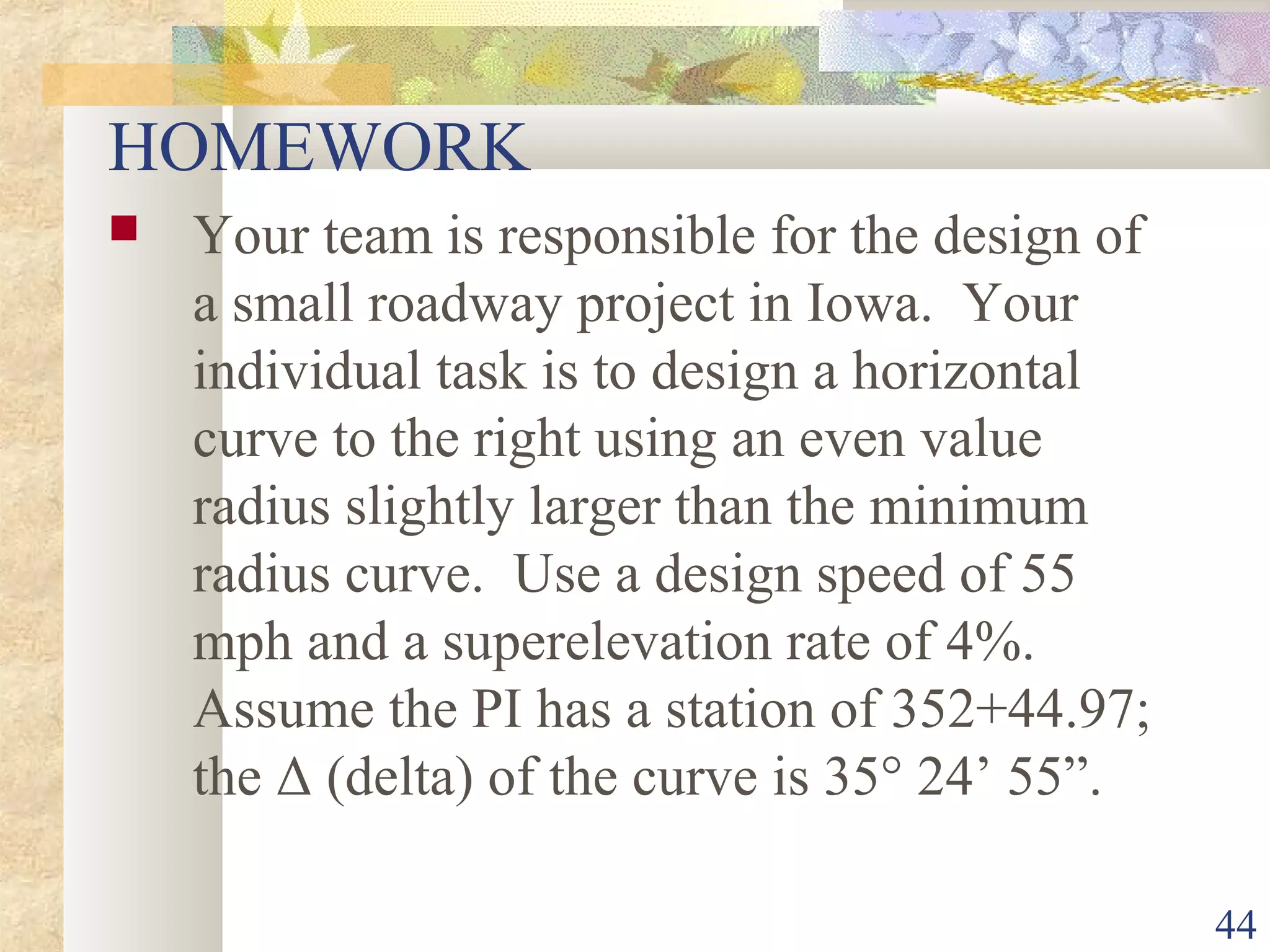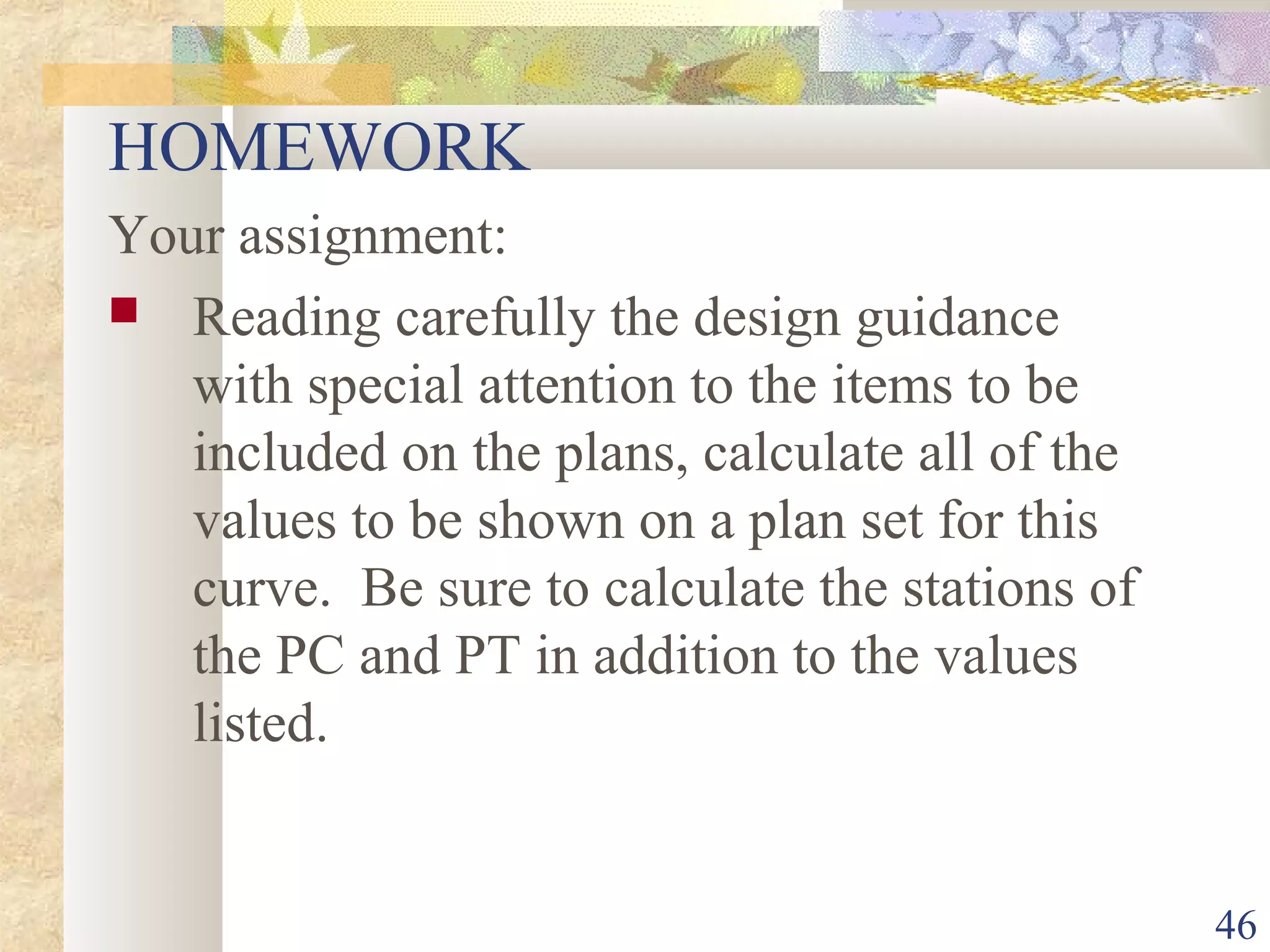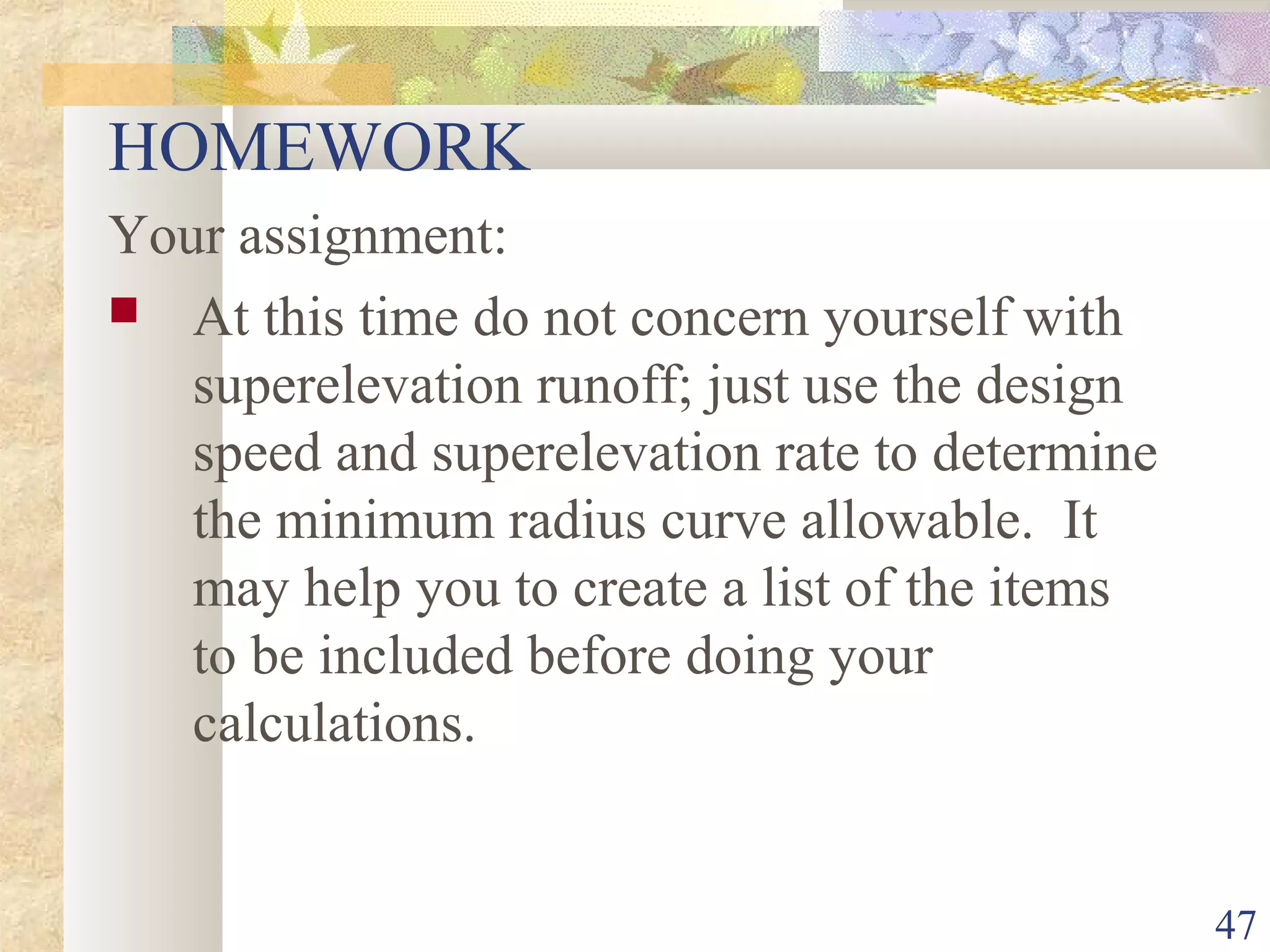Here are the key steps and calculations for the homework:
1. Use design speed of 55 mph, emax of 4%, and fmax of 0.12 from Green Book
2. Calculate minimum radius using formula: Rmin = V2/(15(e+f)) = 1,200 ft
3. Select radius of 1,400 ft
4. Given: PI station of 352+44.97, Δ of 35° 24' 55"
5. Calculate curve length using L = ΔR/5729.58 = 1,260 ft
6. Calculate tangent length using T = Rtan(Δ/2) = 630 ft
7. Calculate PC station: PC = PI - T
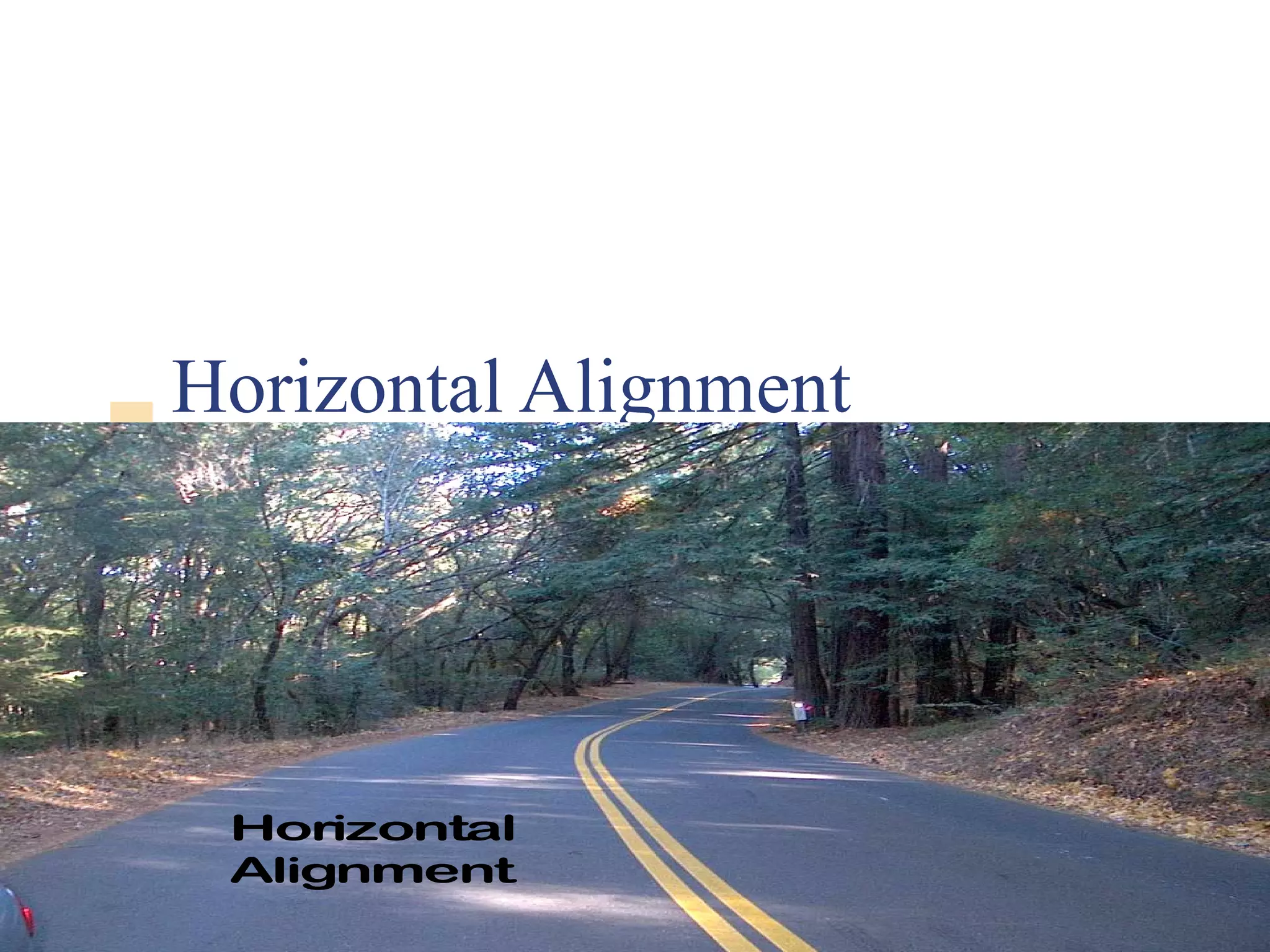
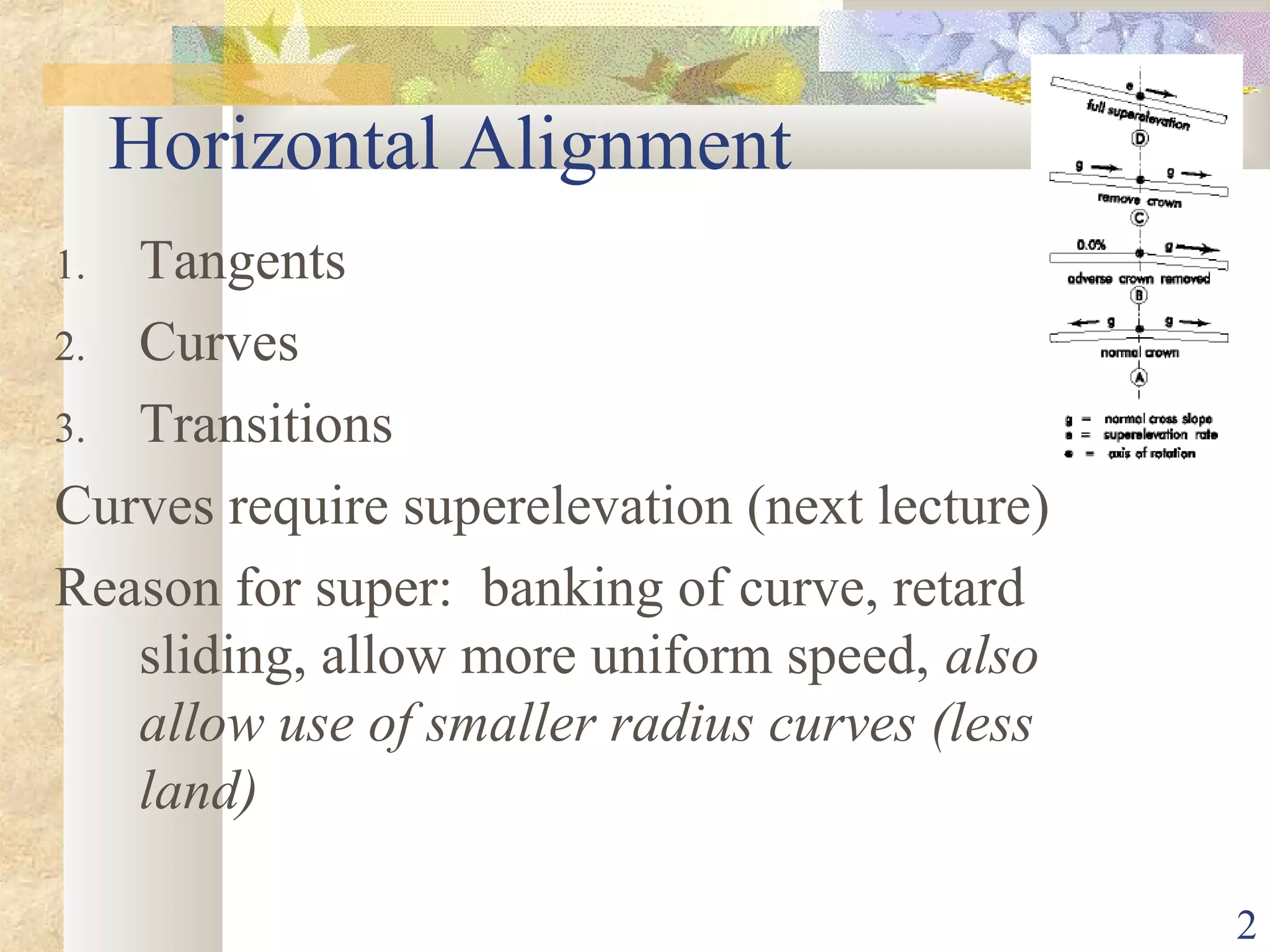
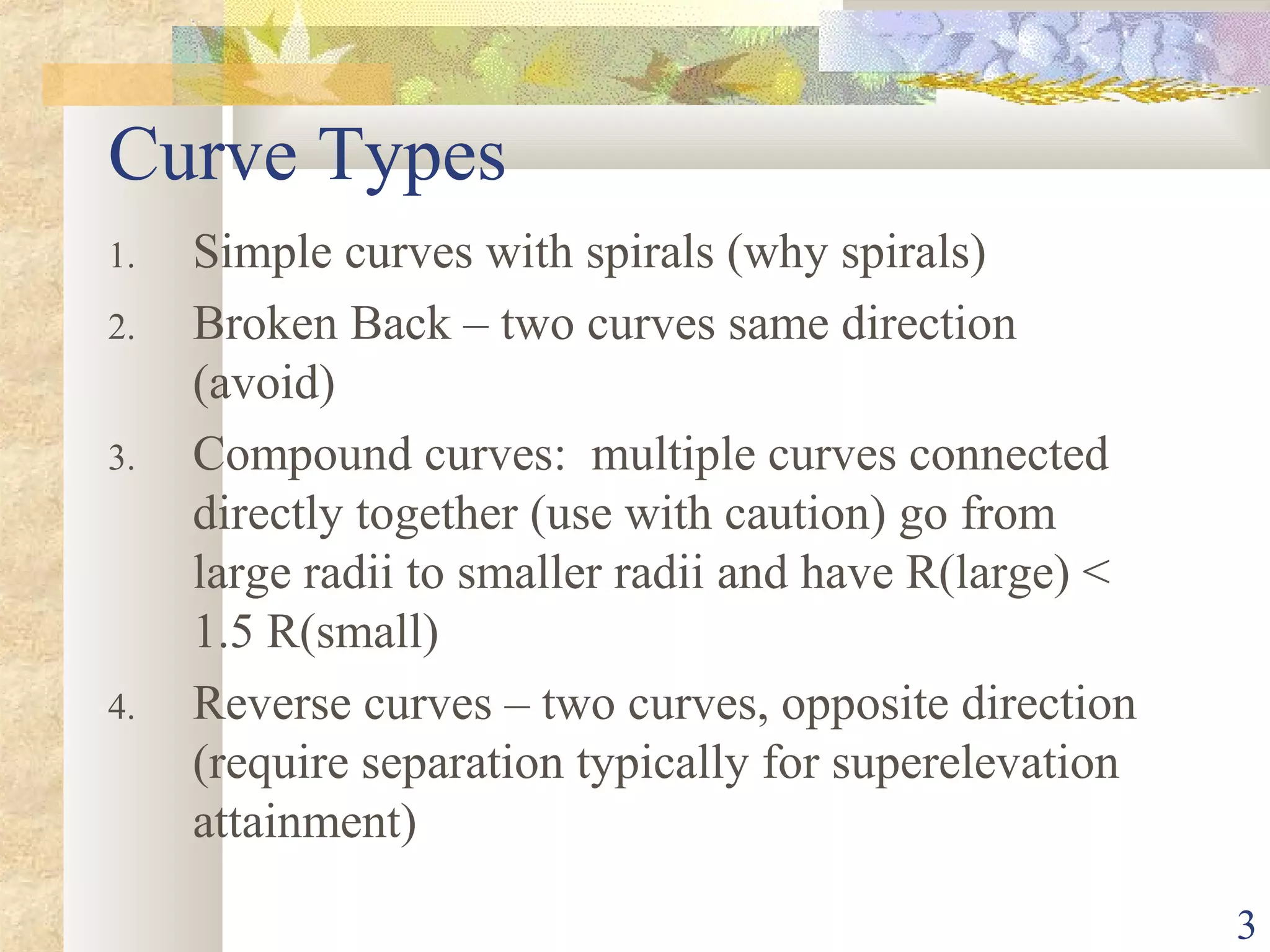
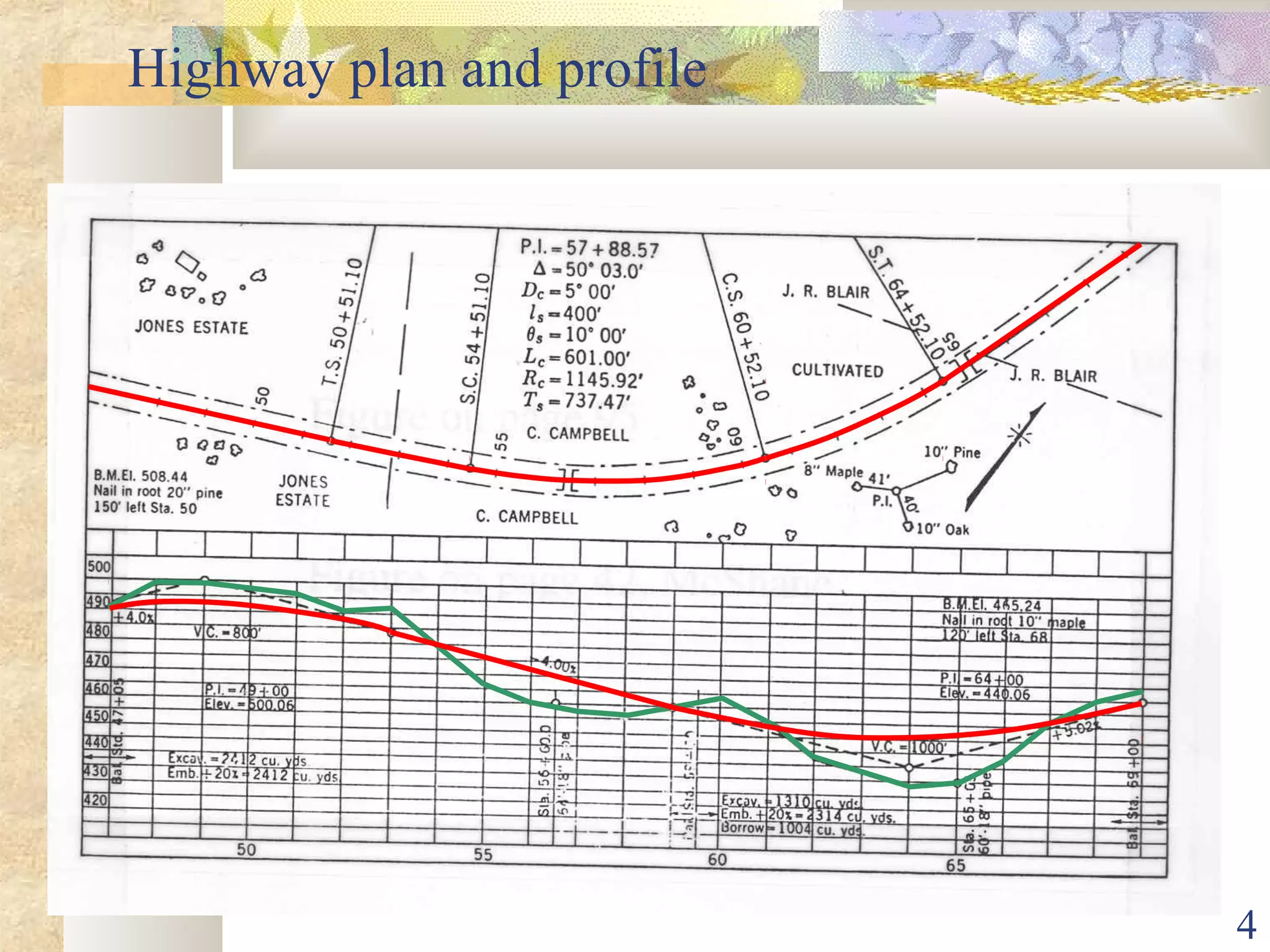
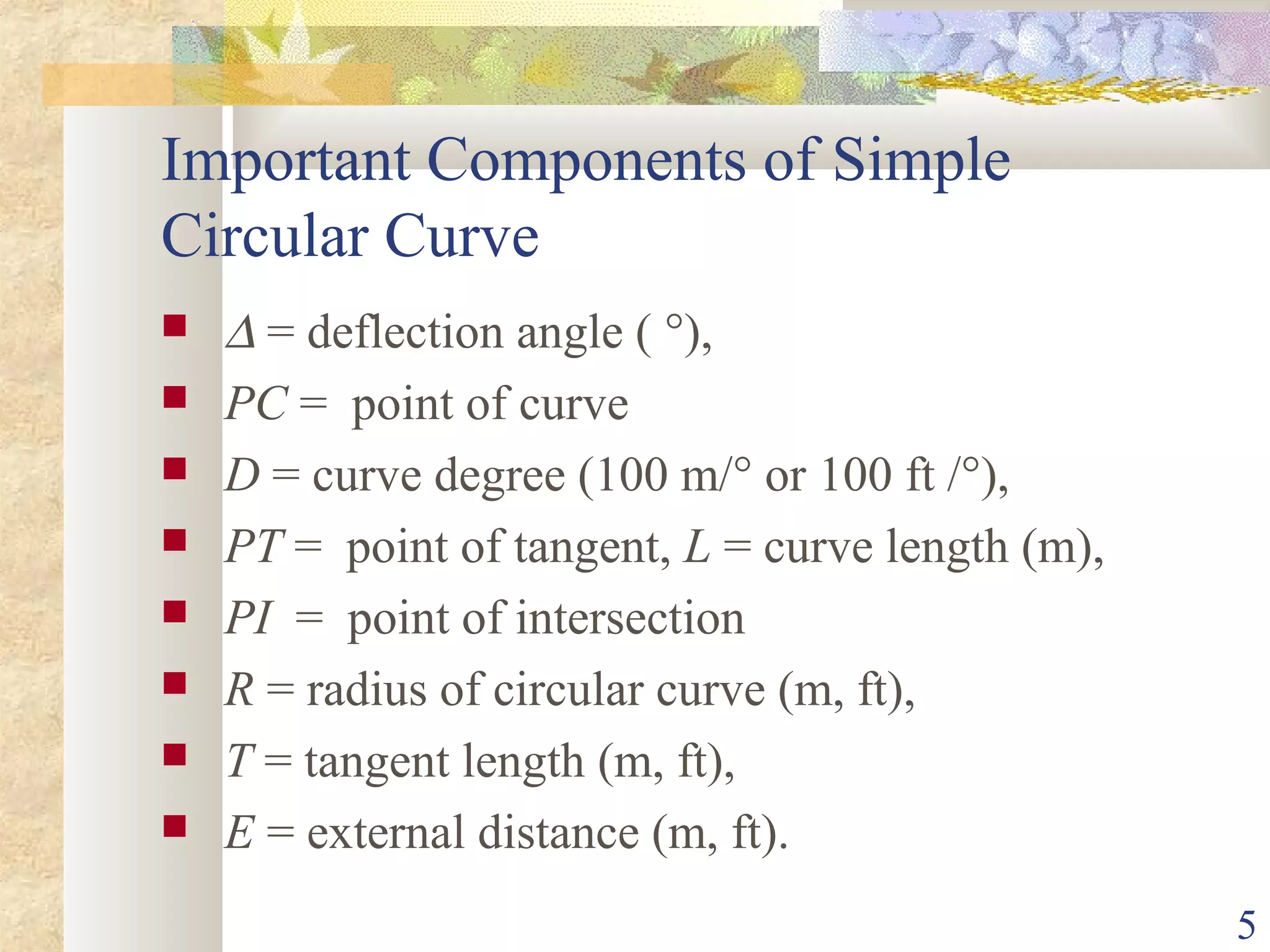
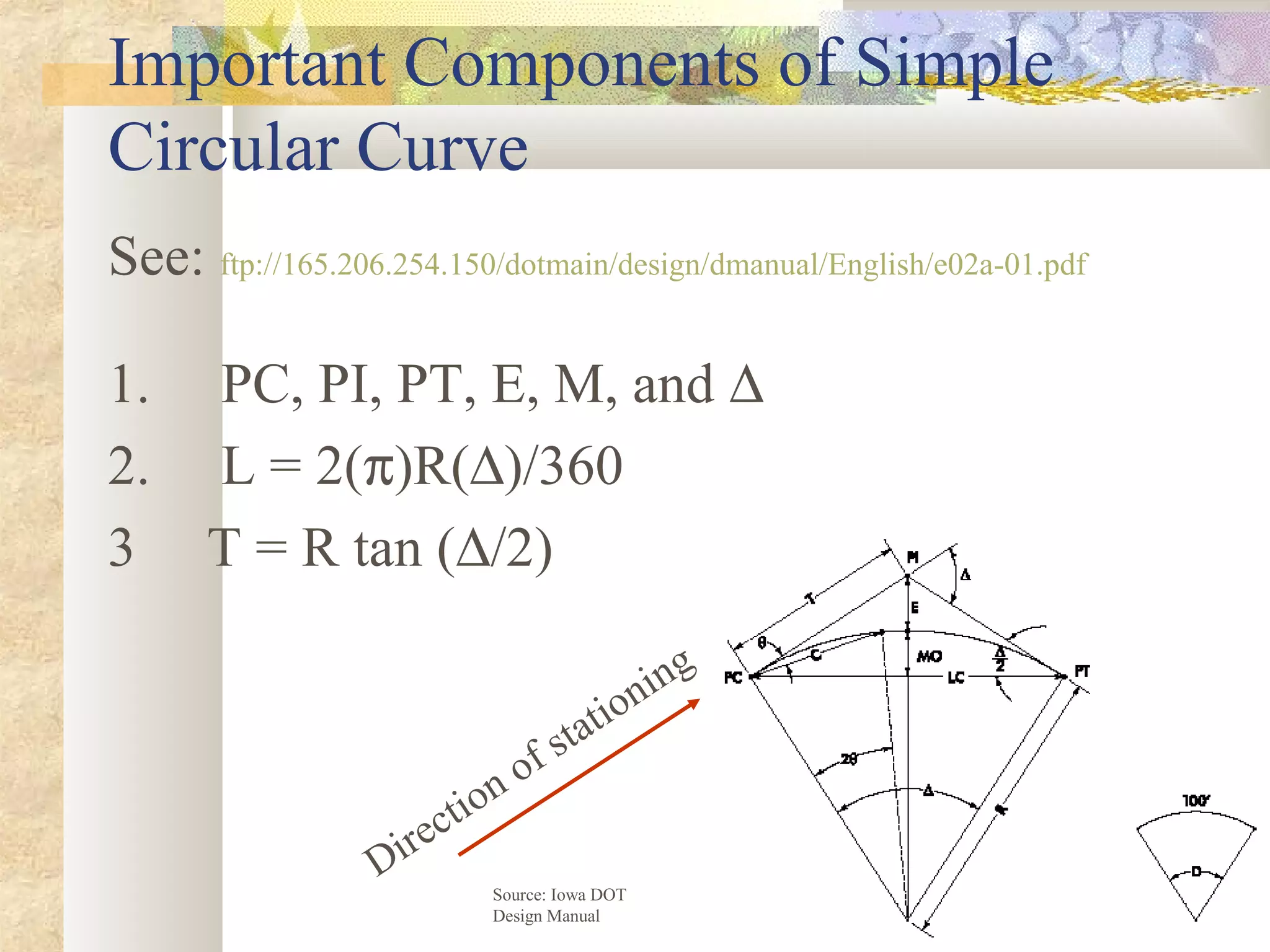
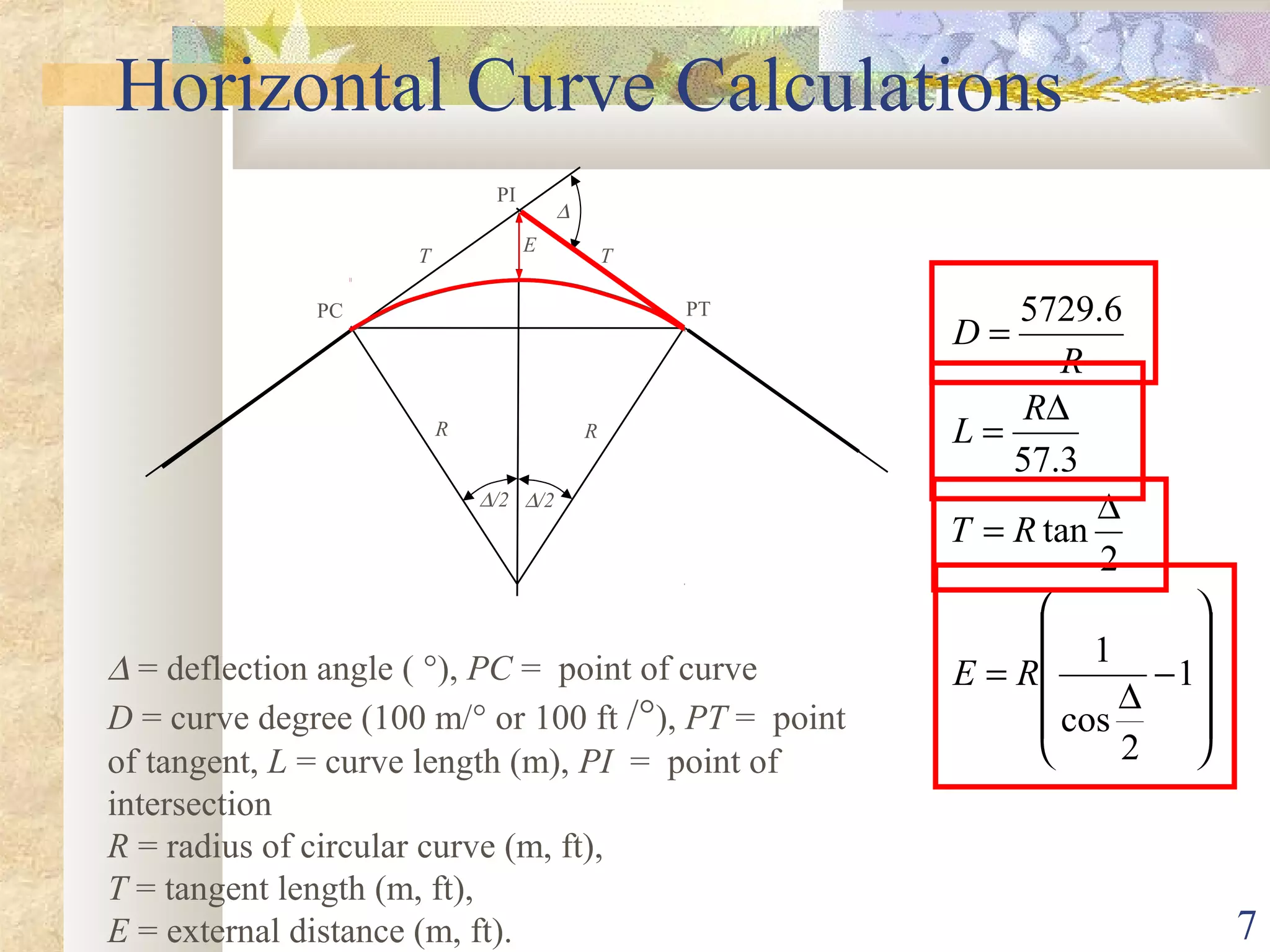
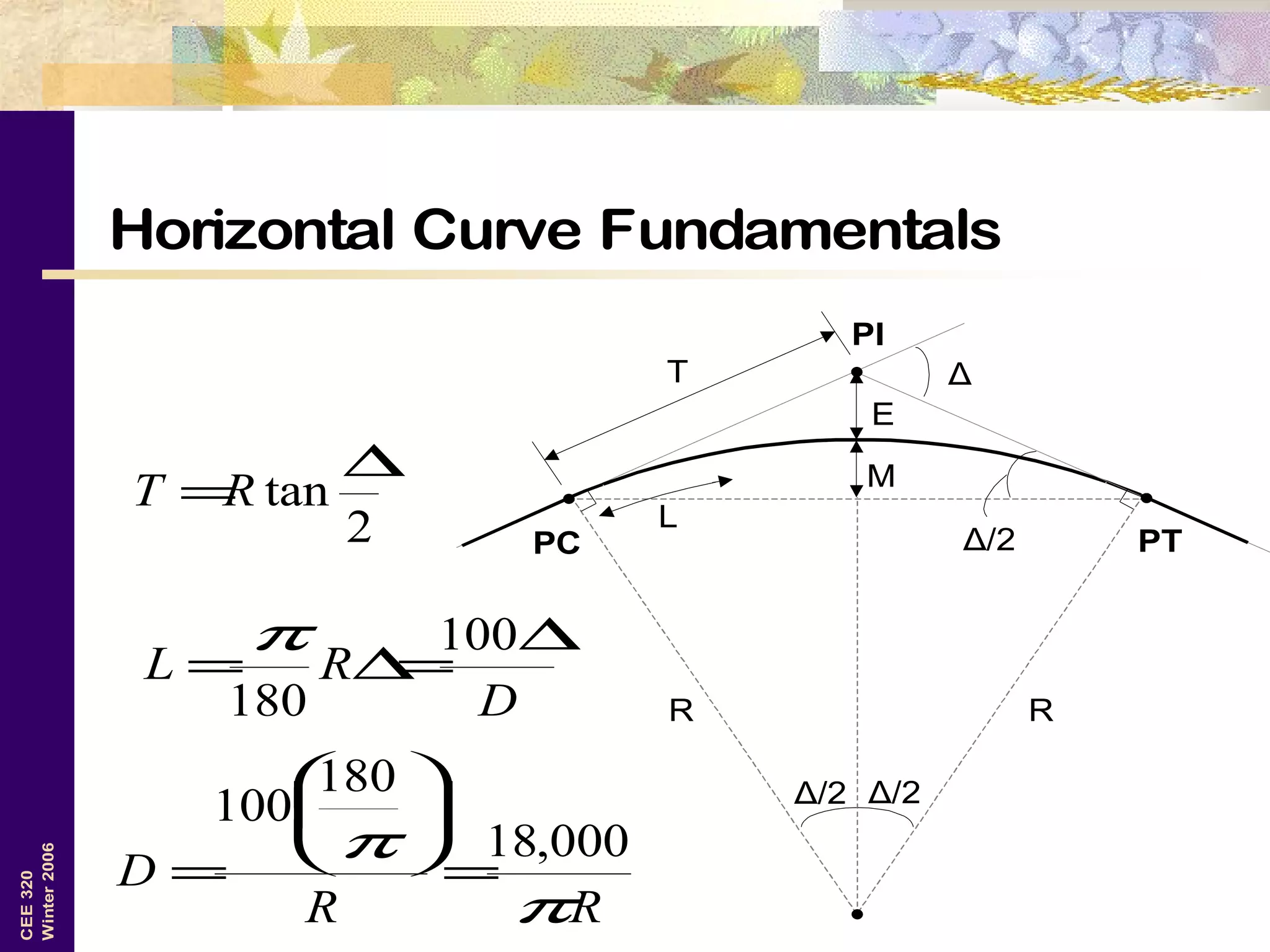
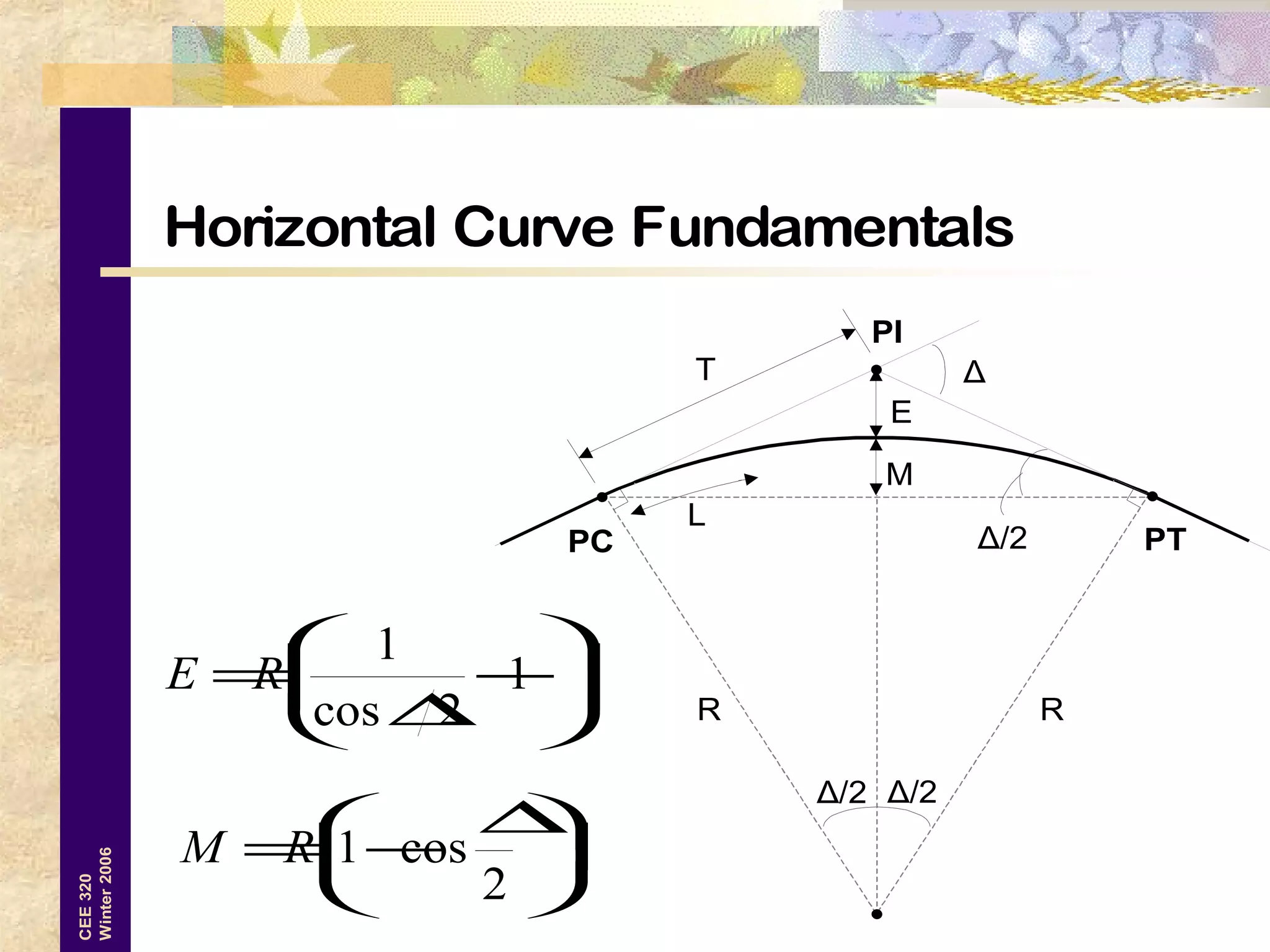
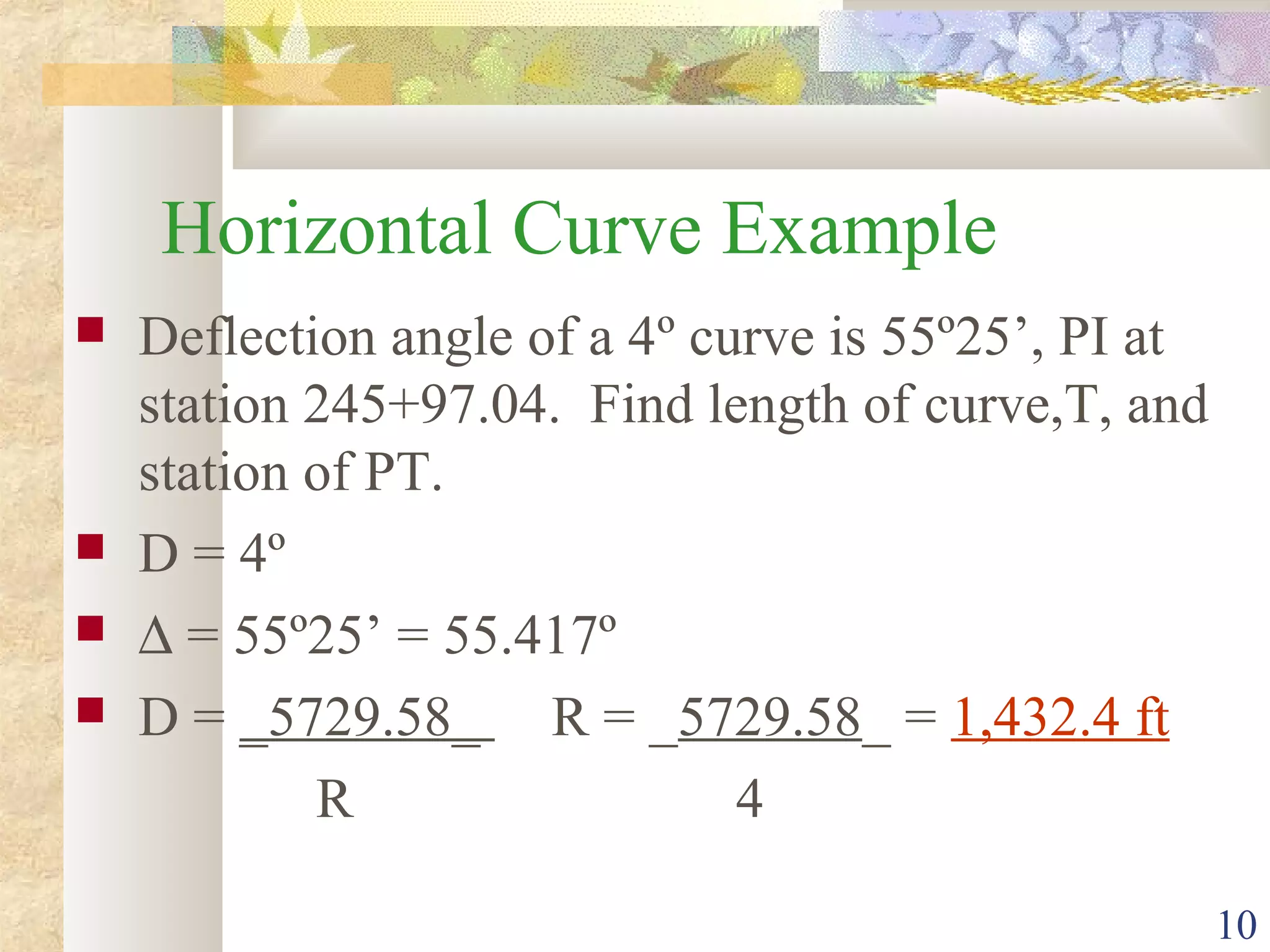

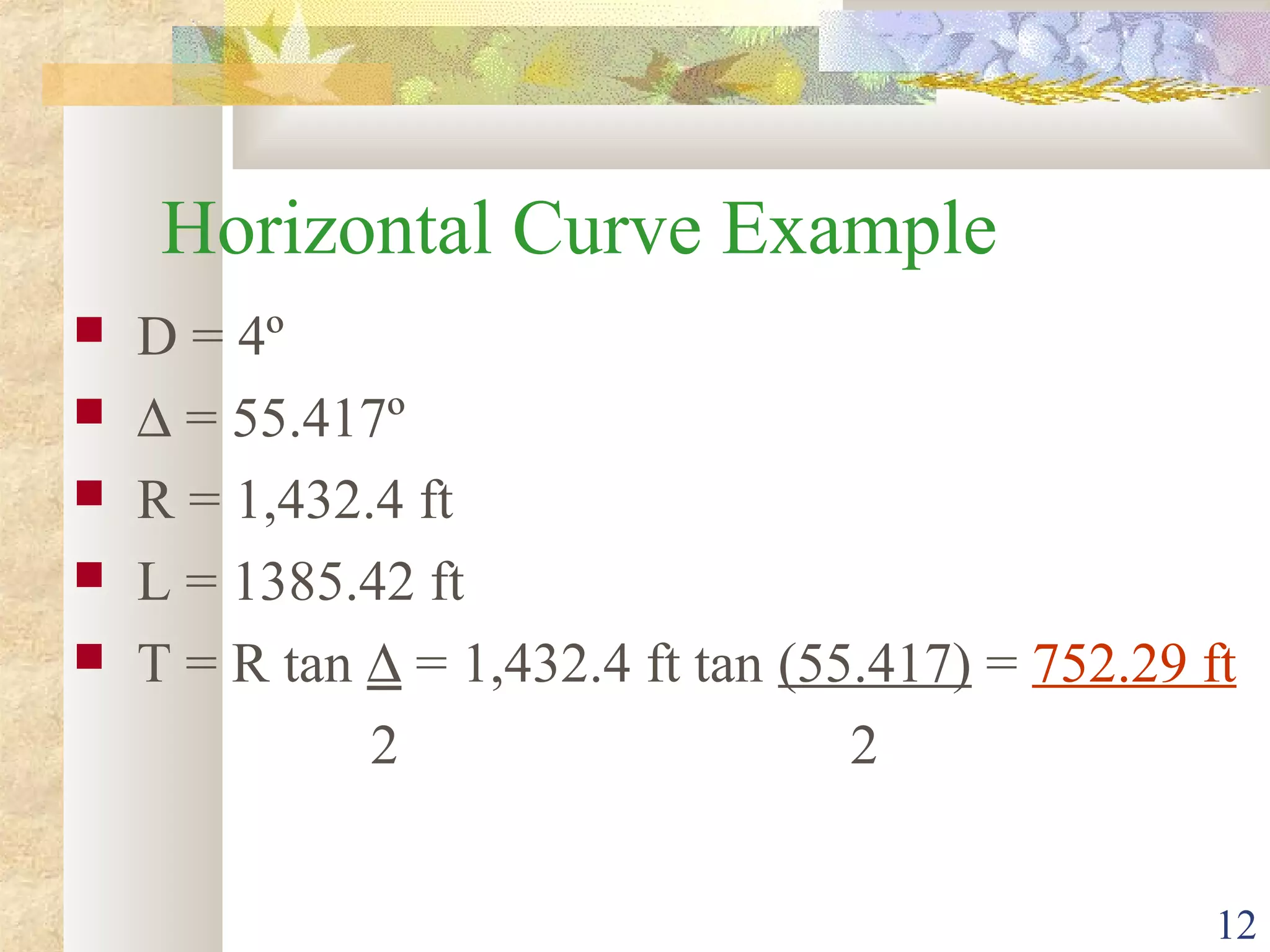
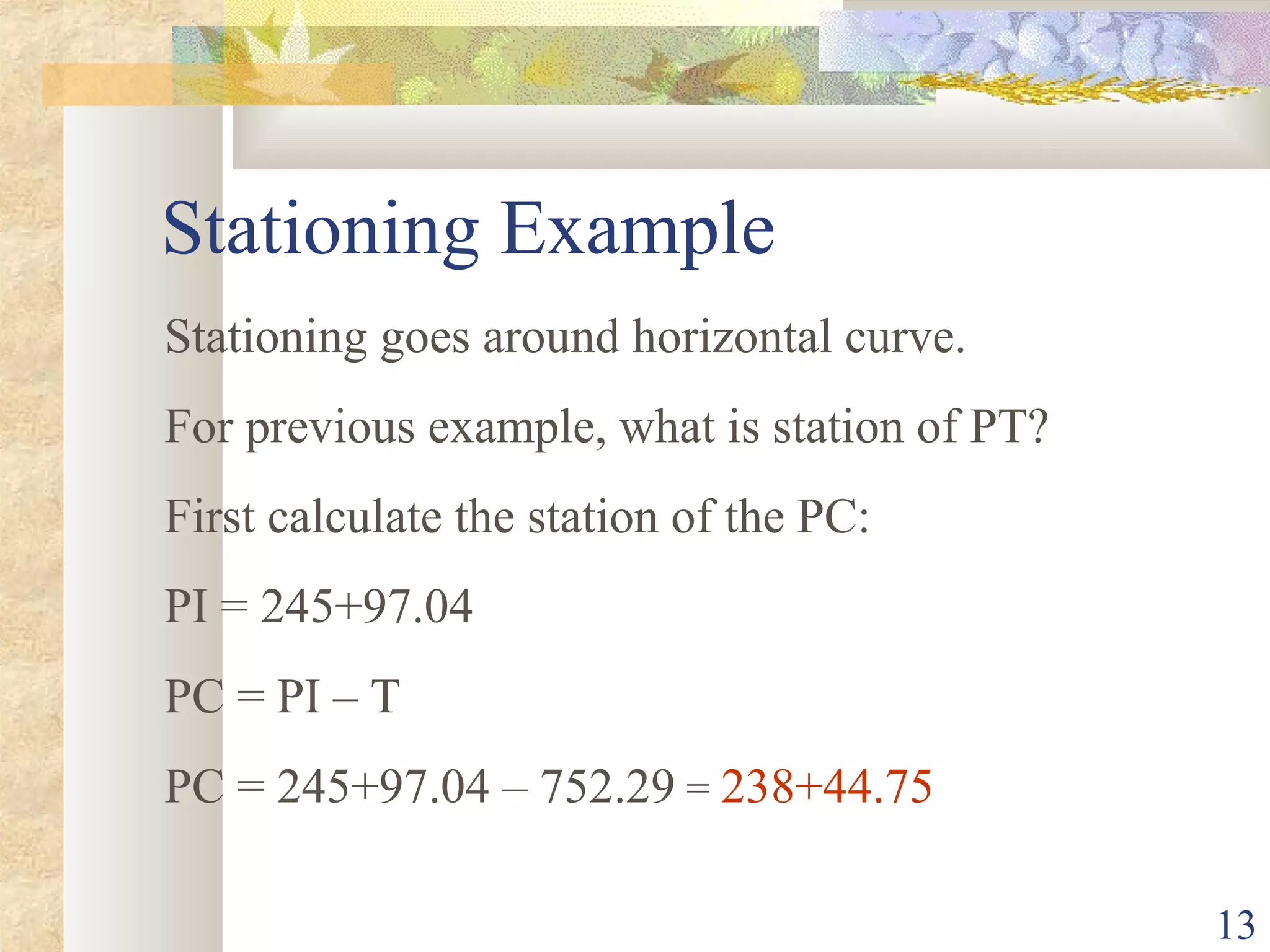
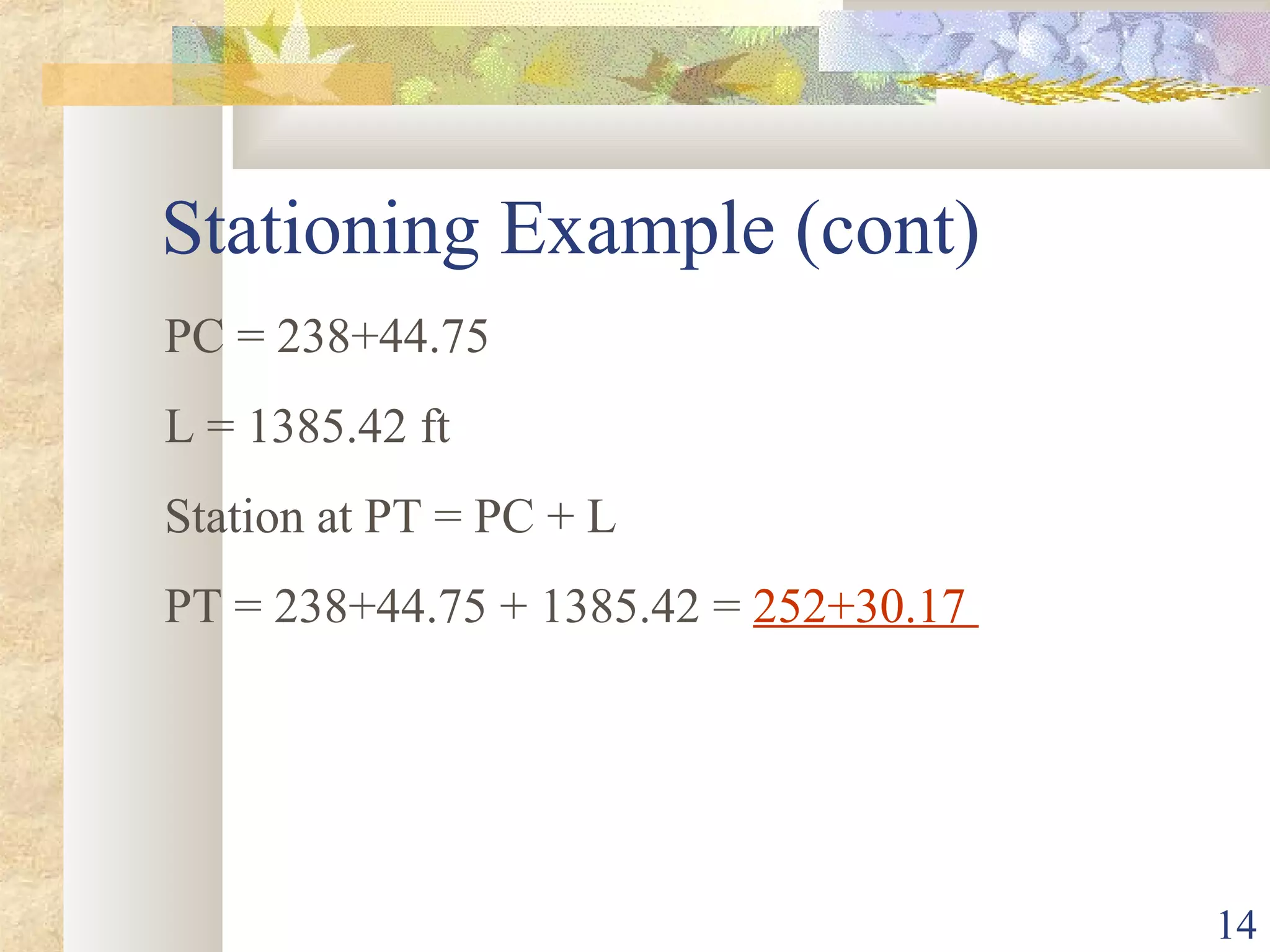
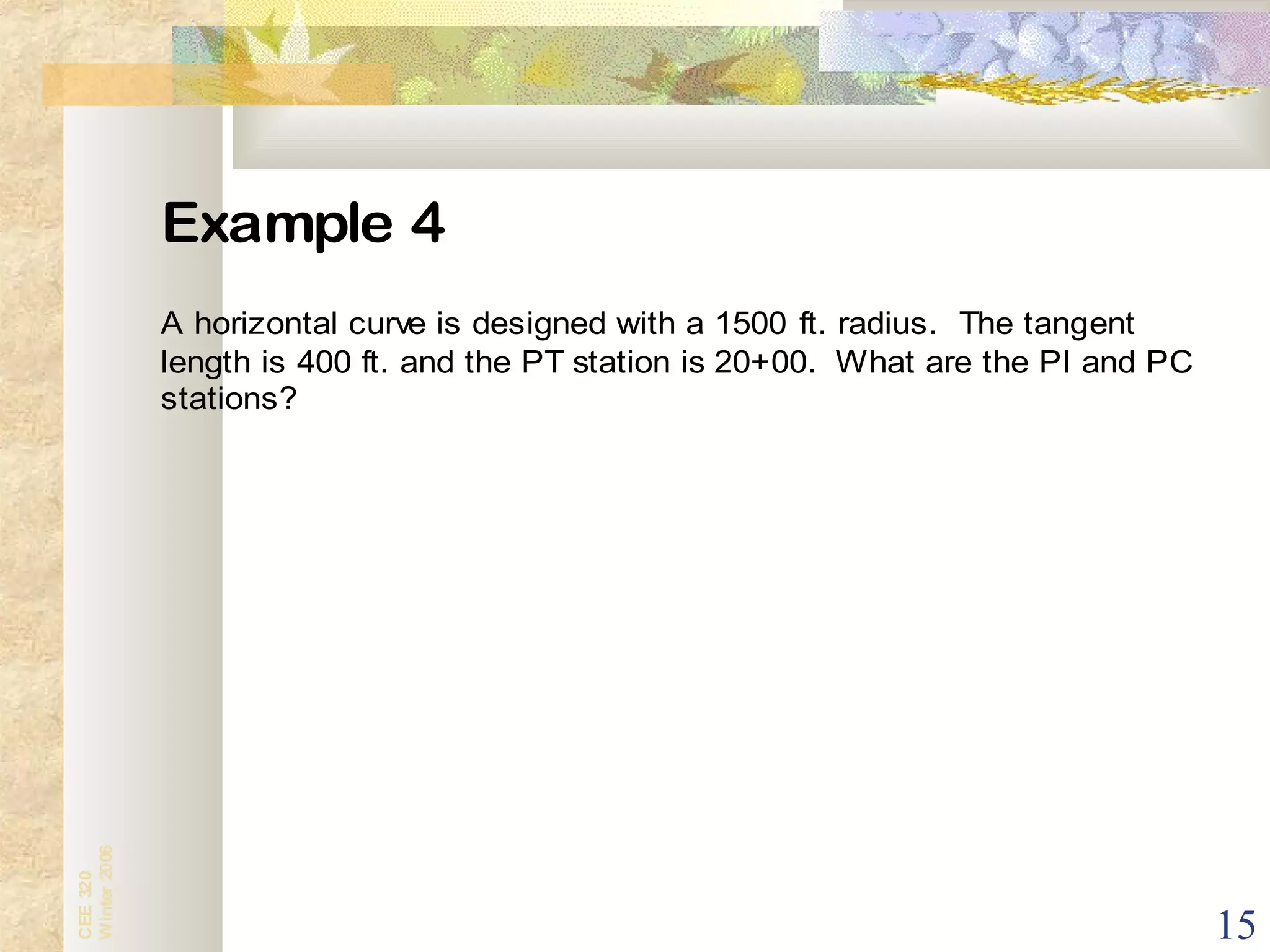


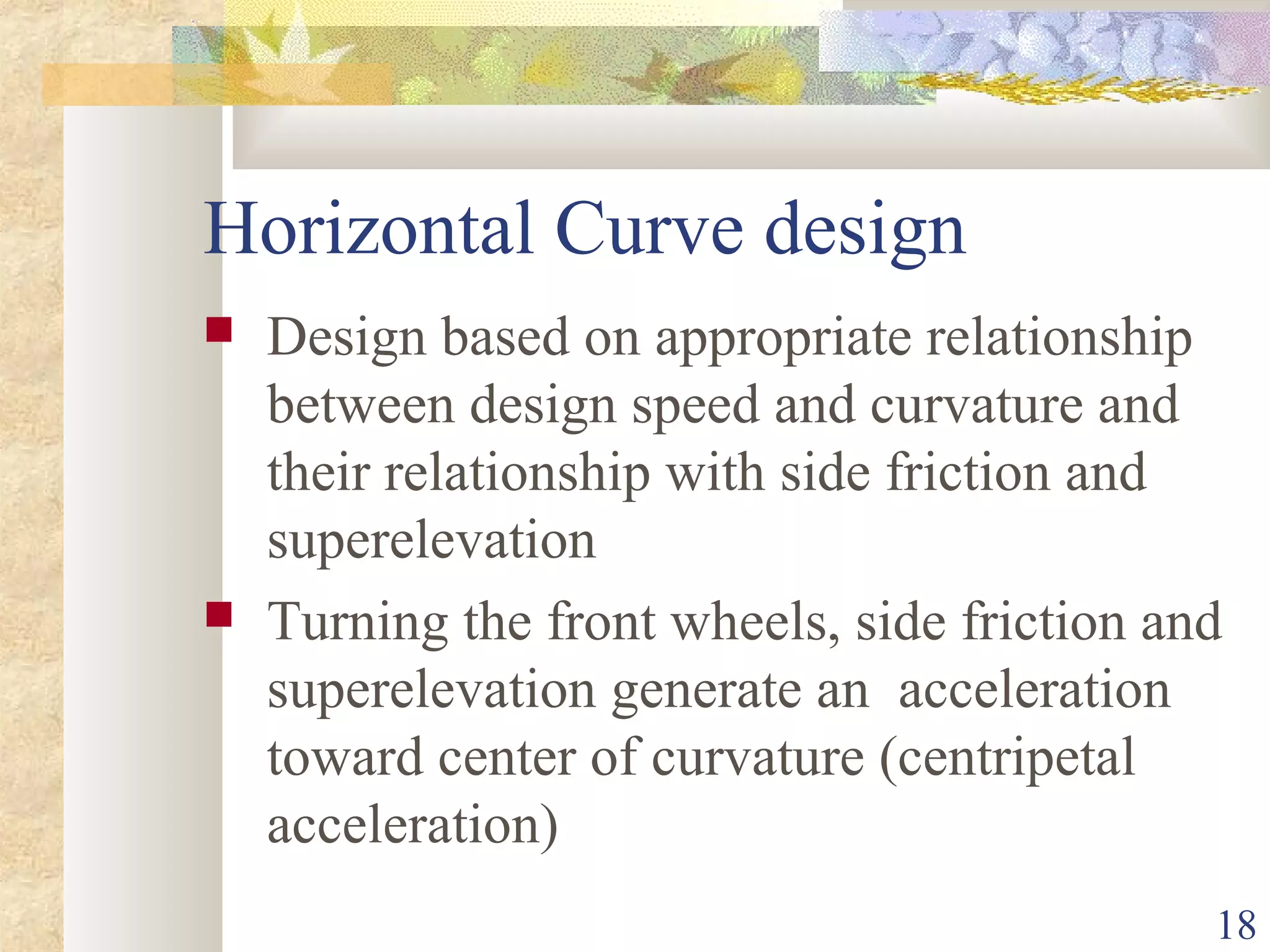
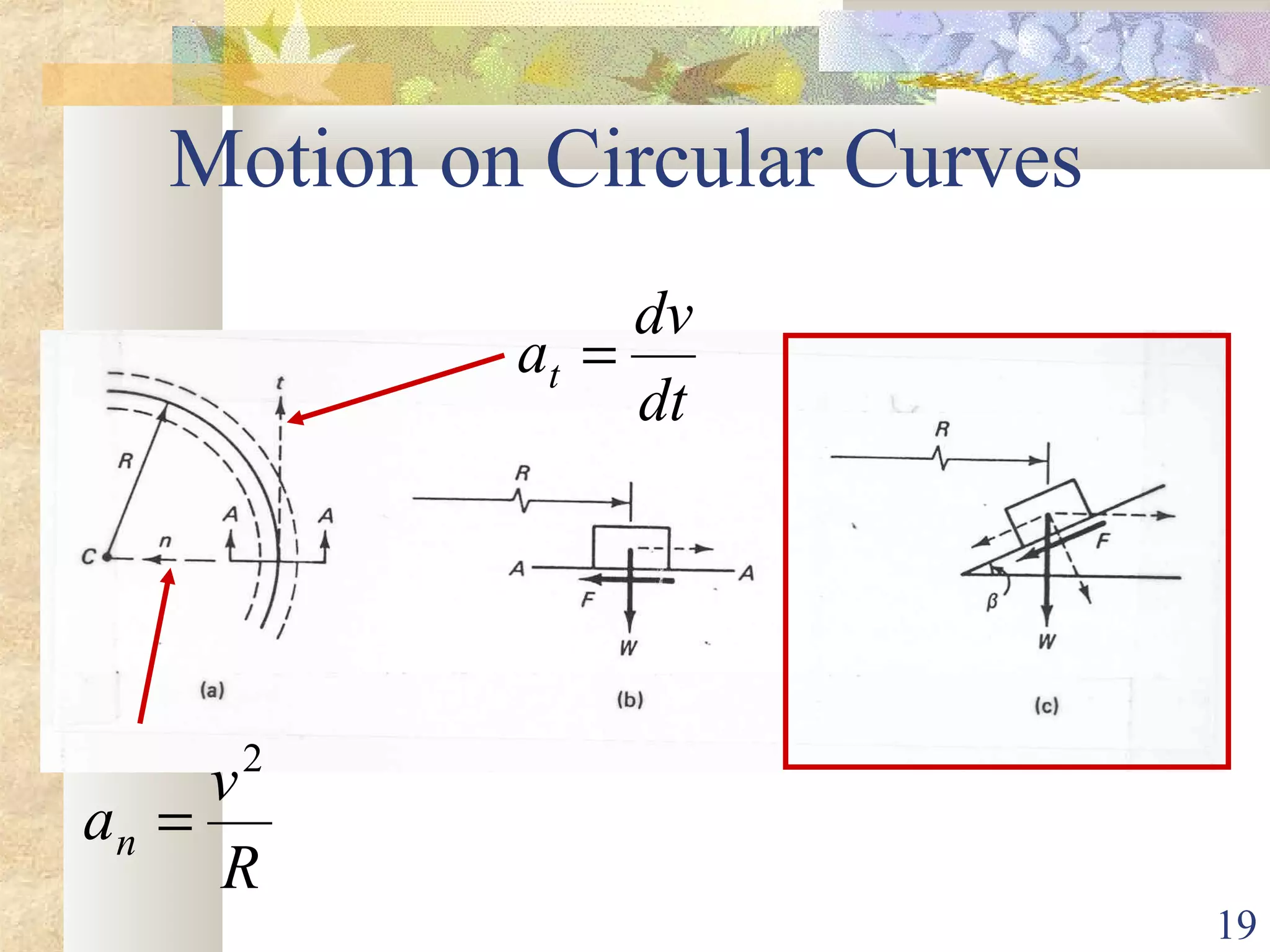
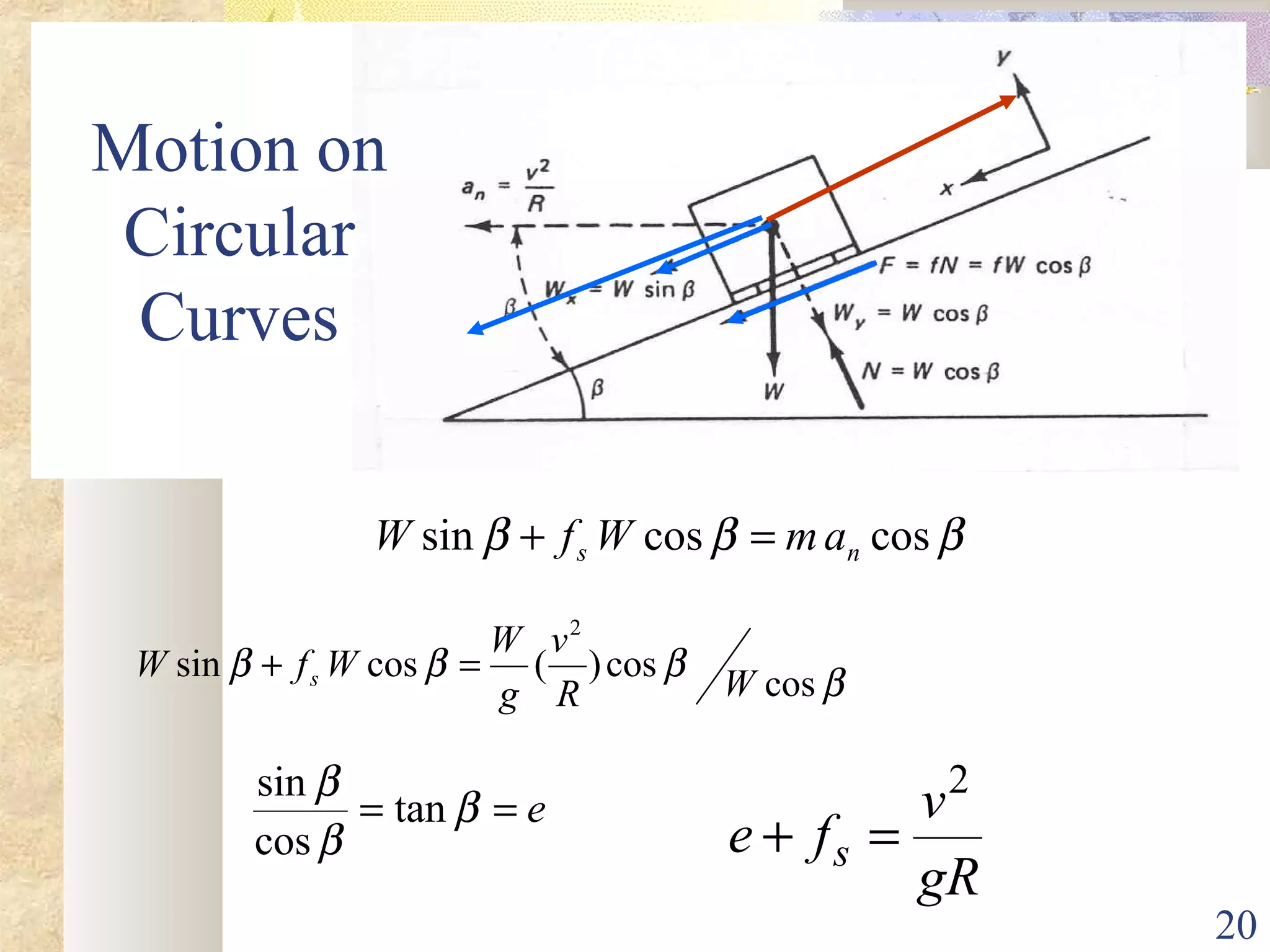
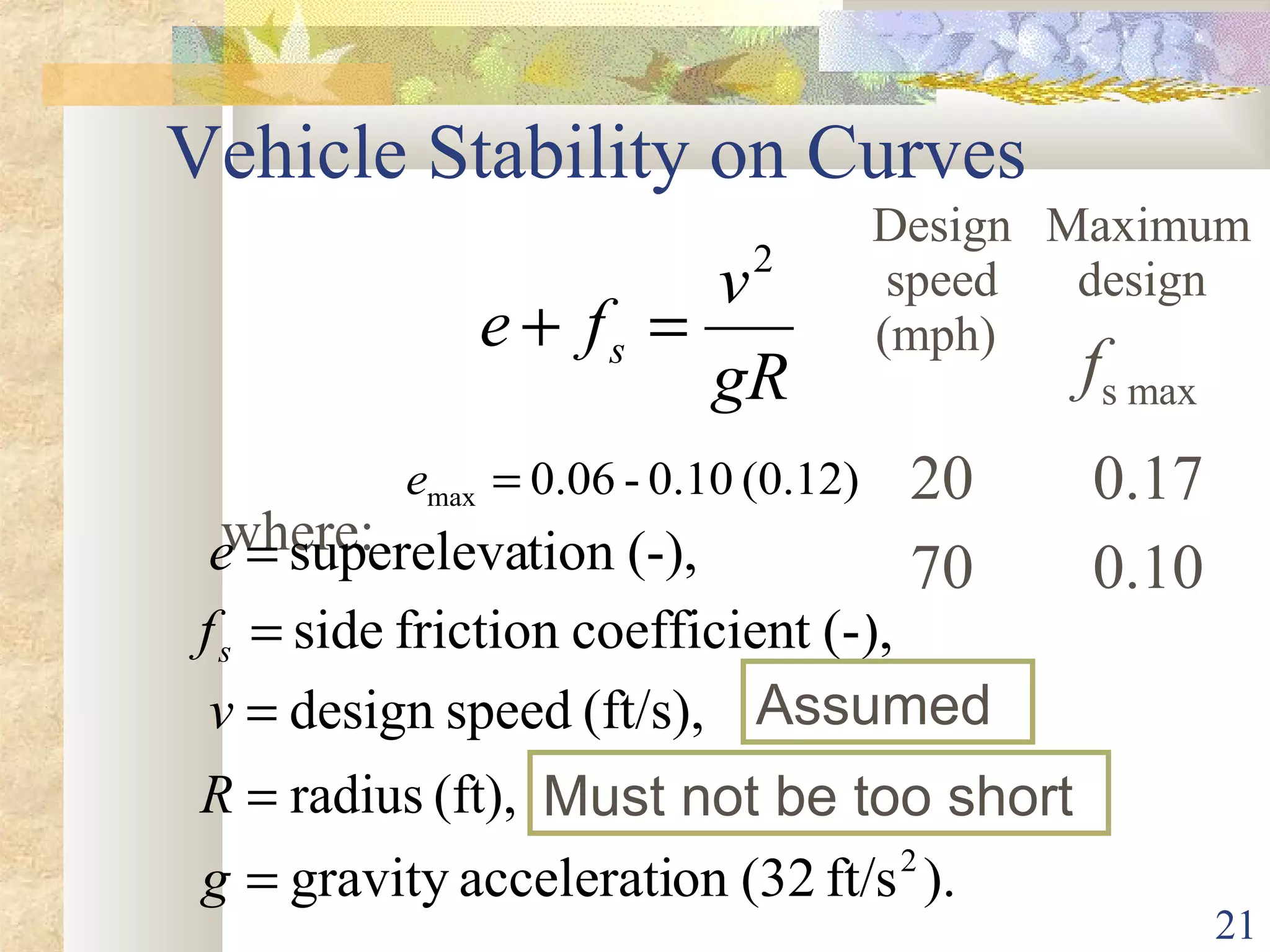
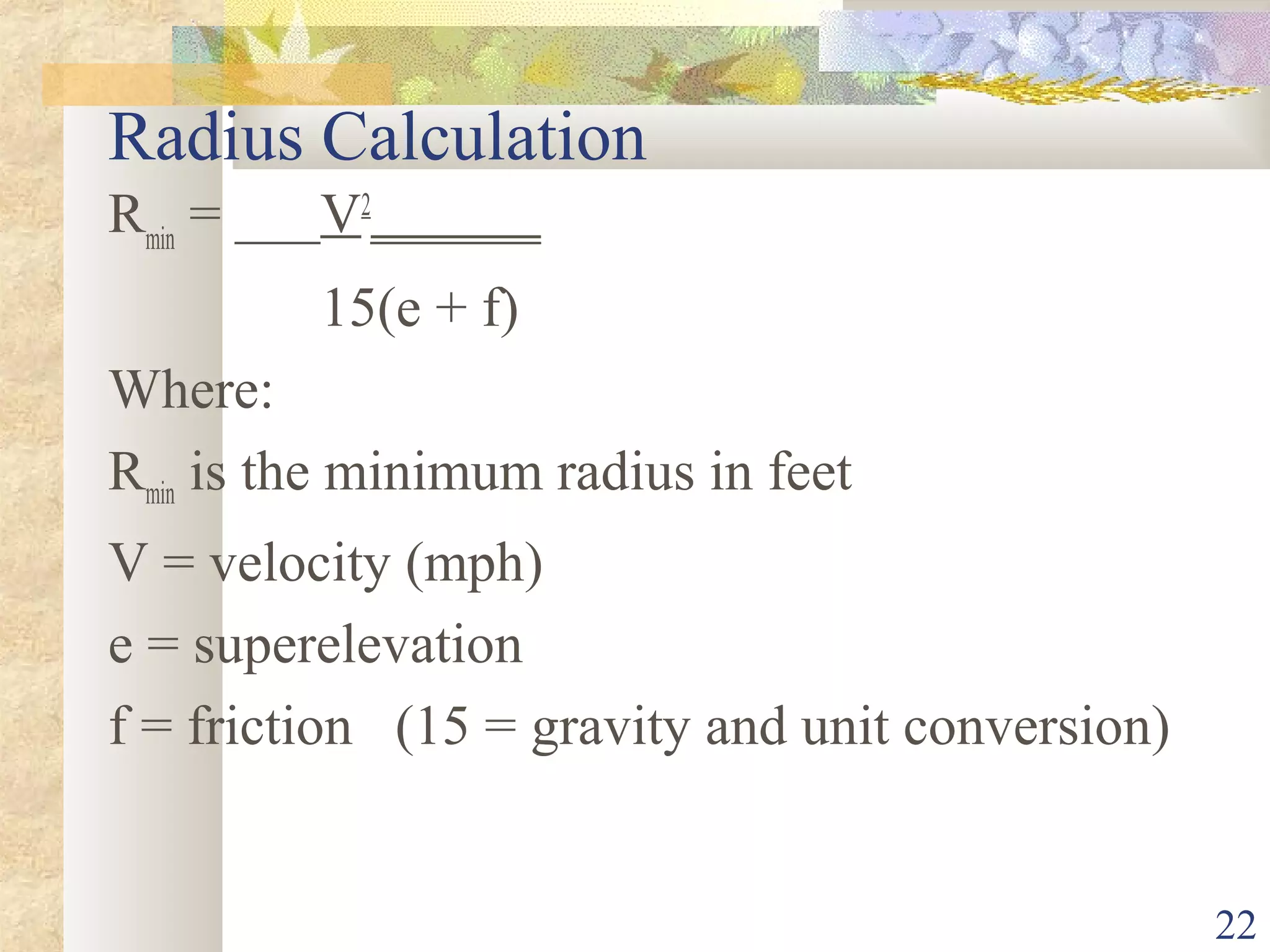
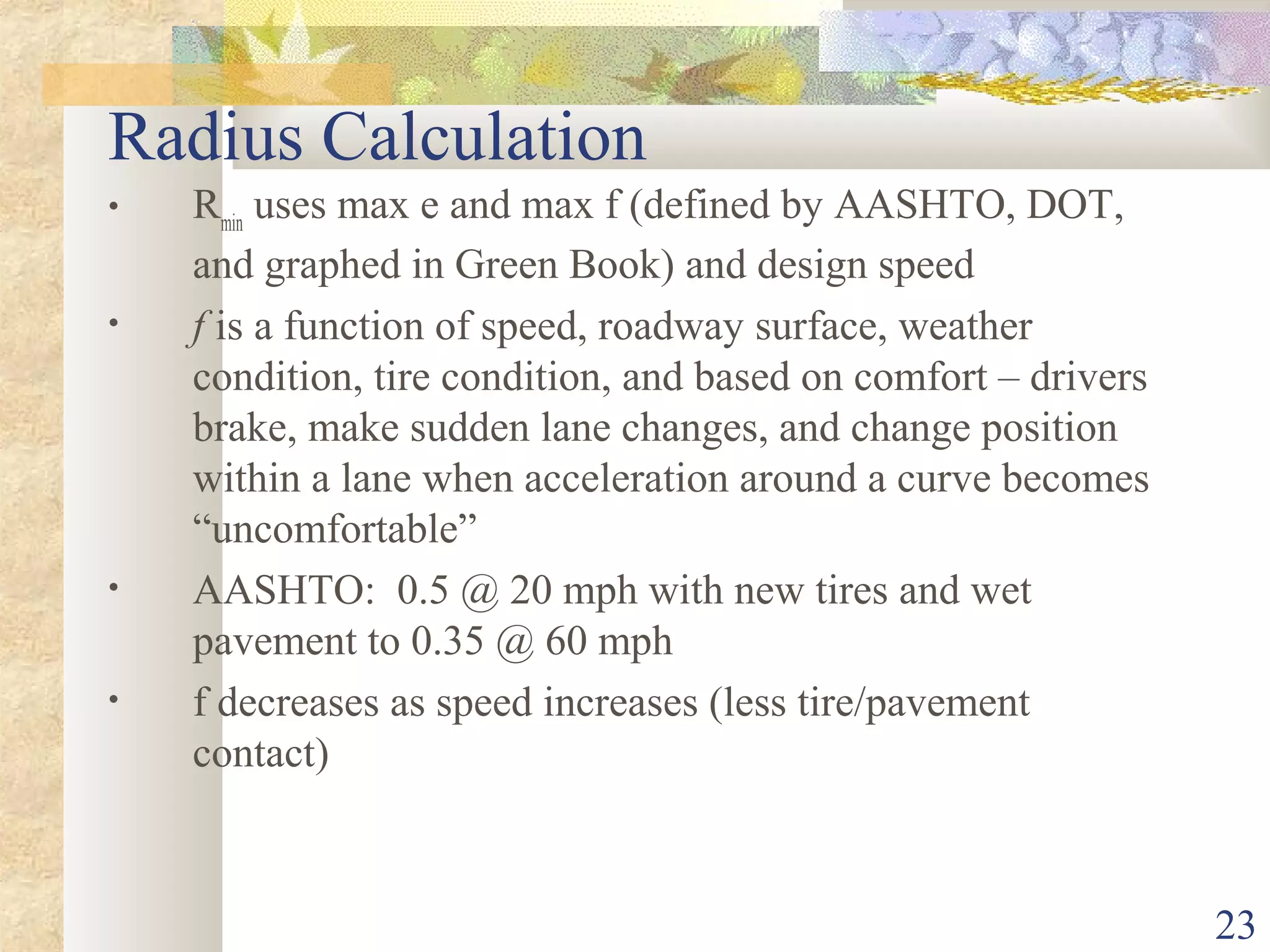
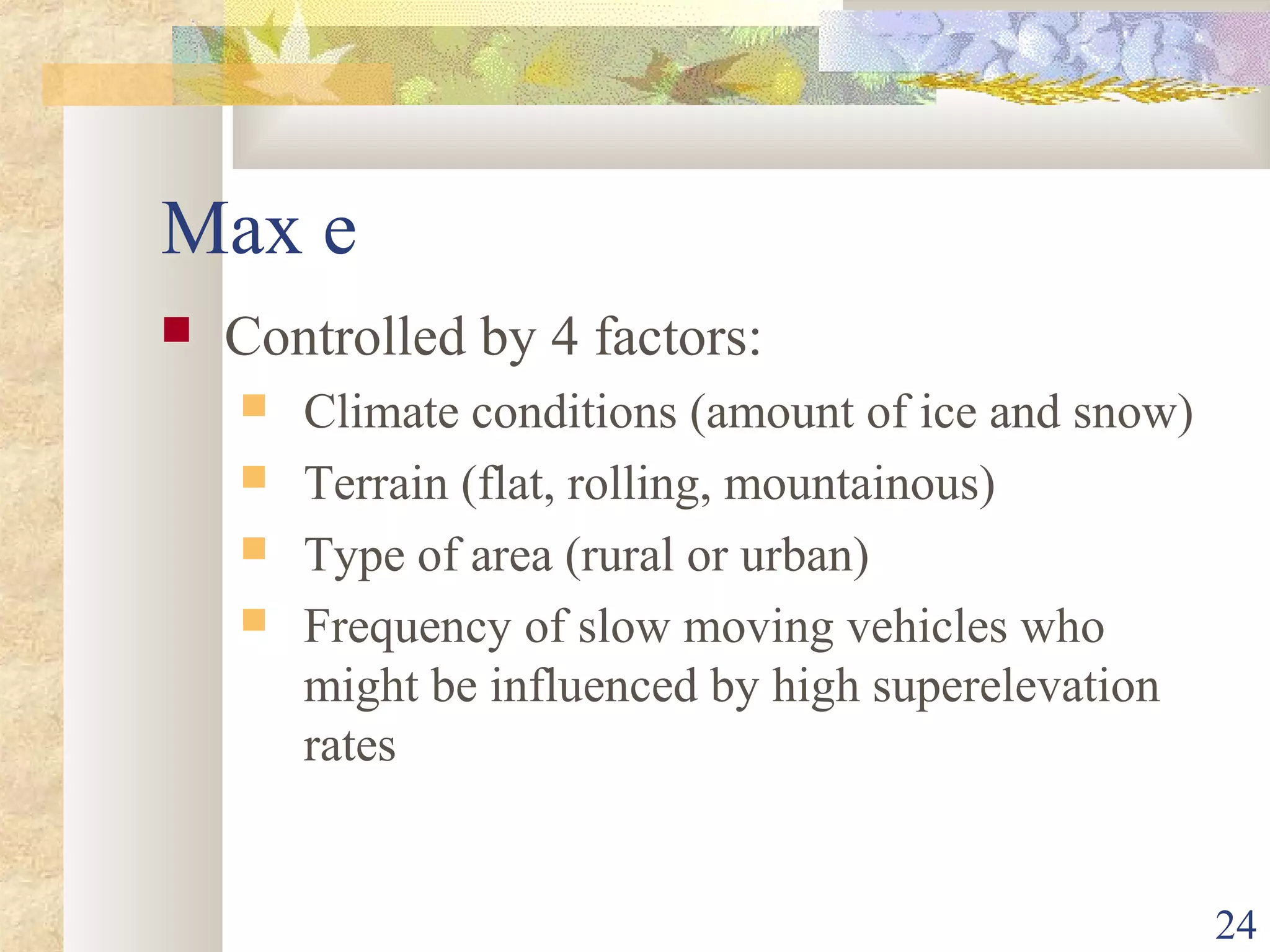
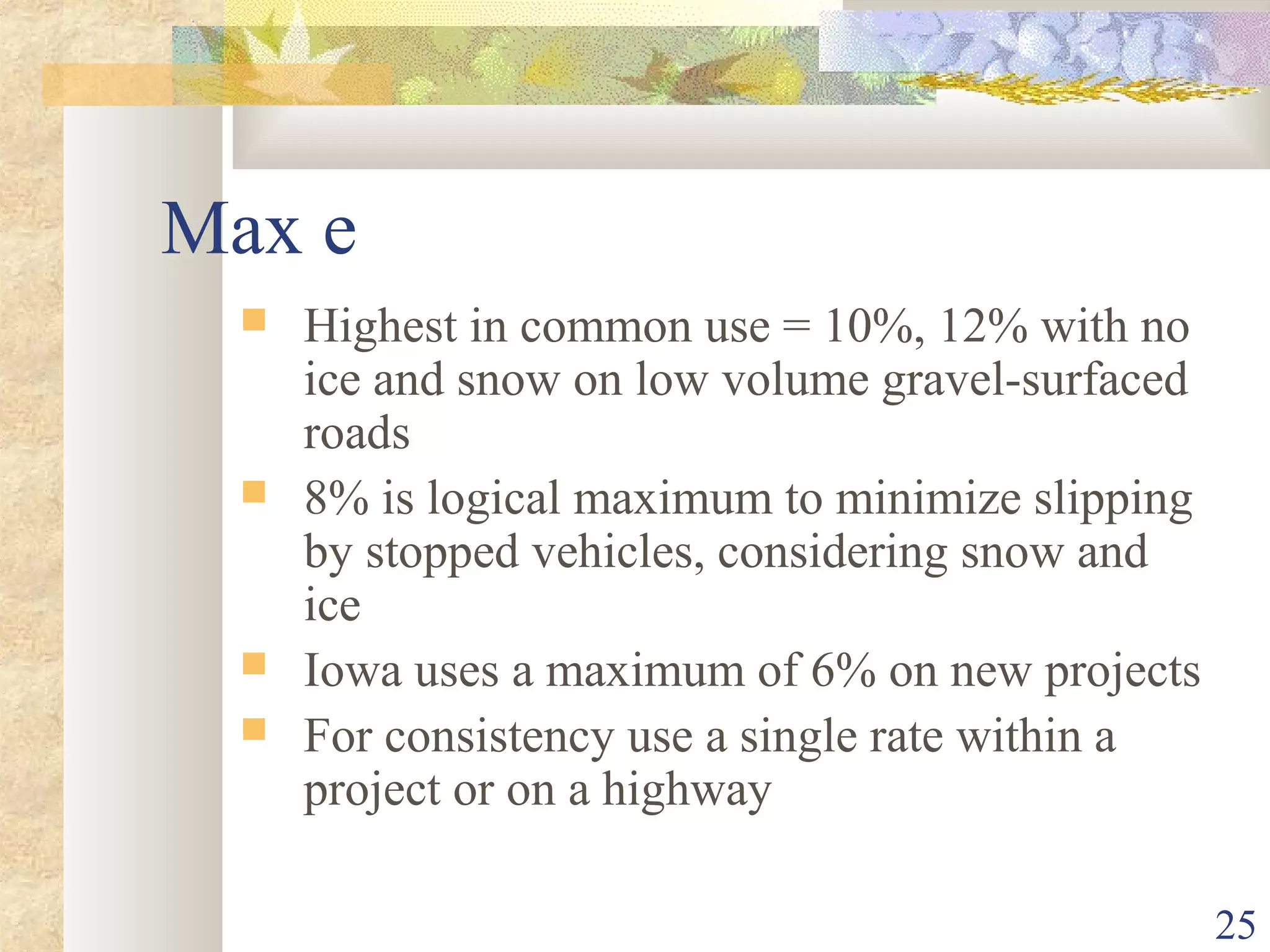

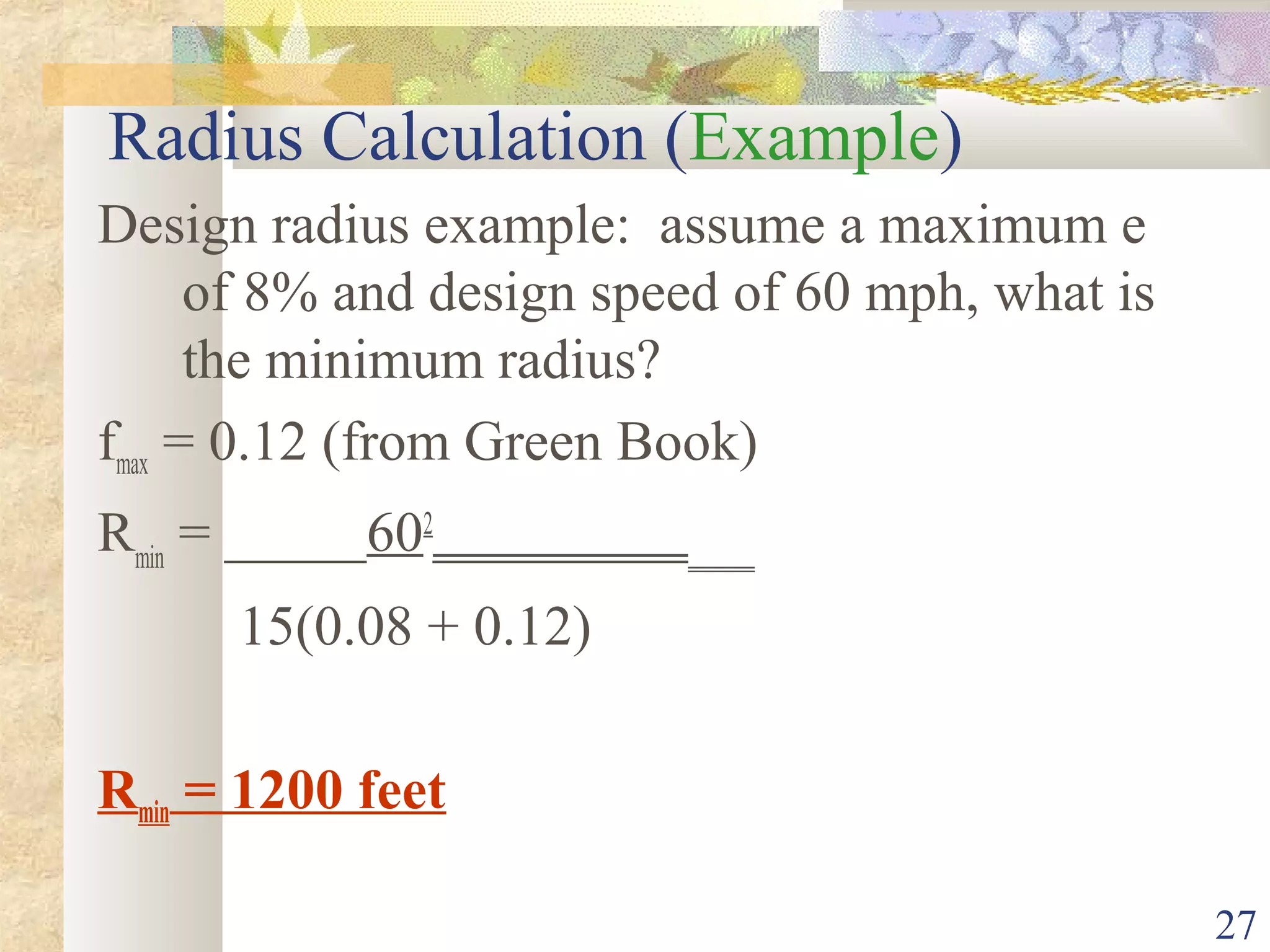
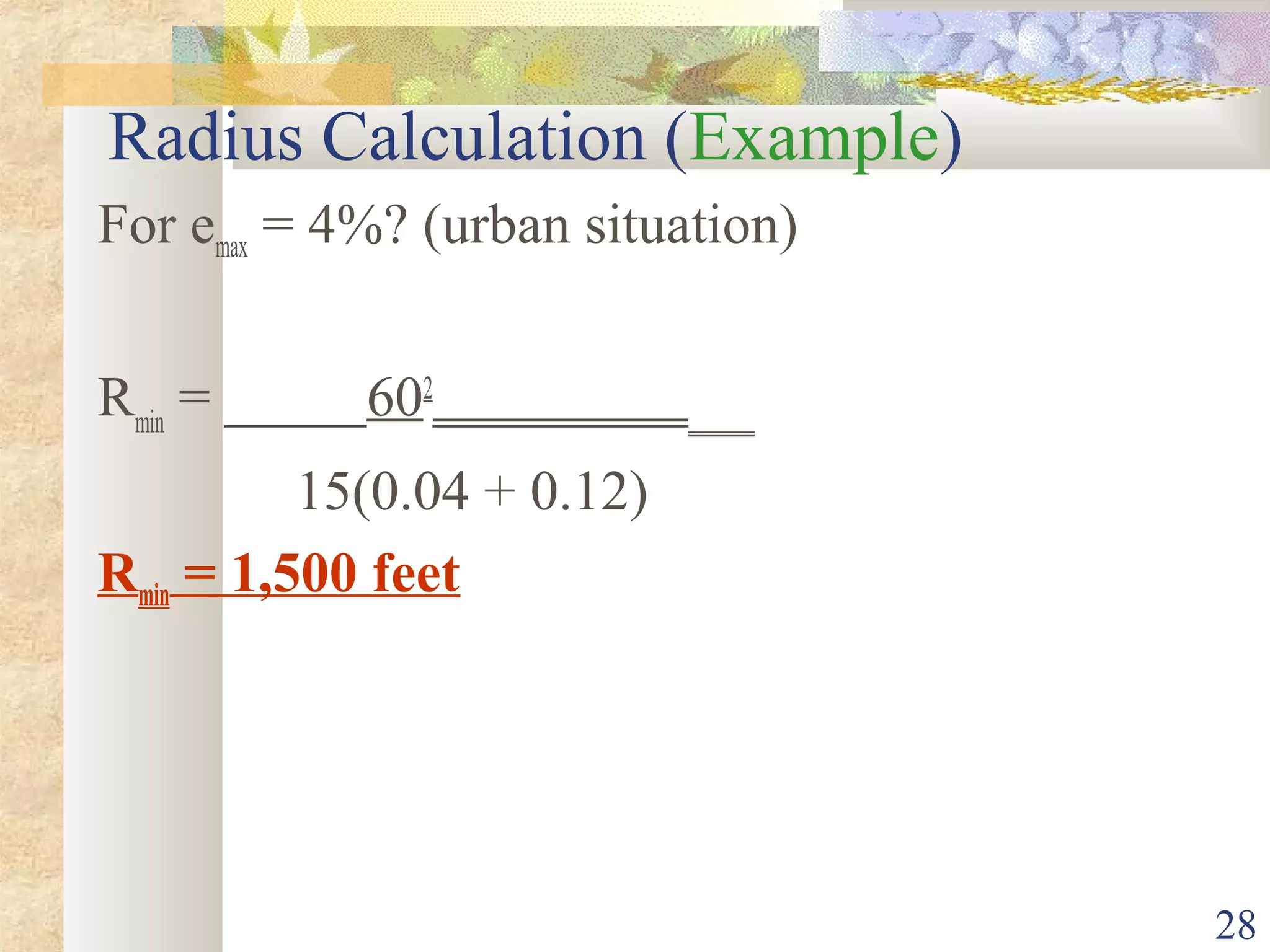
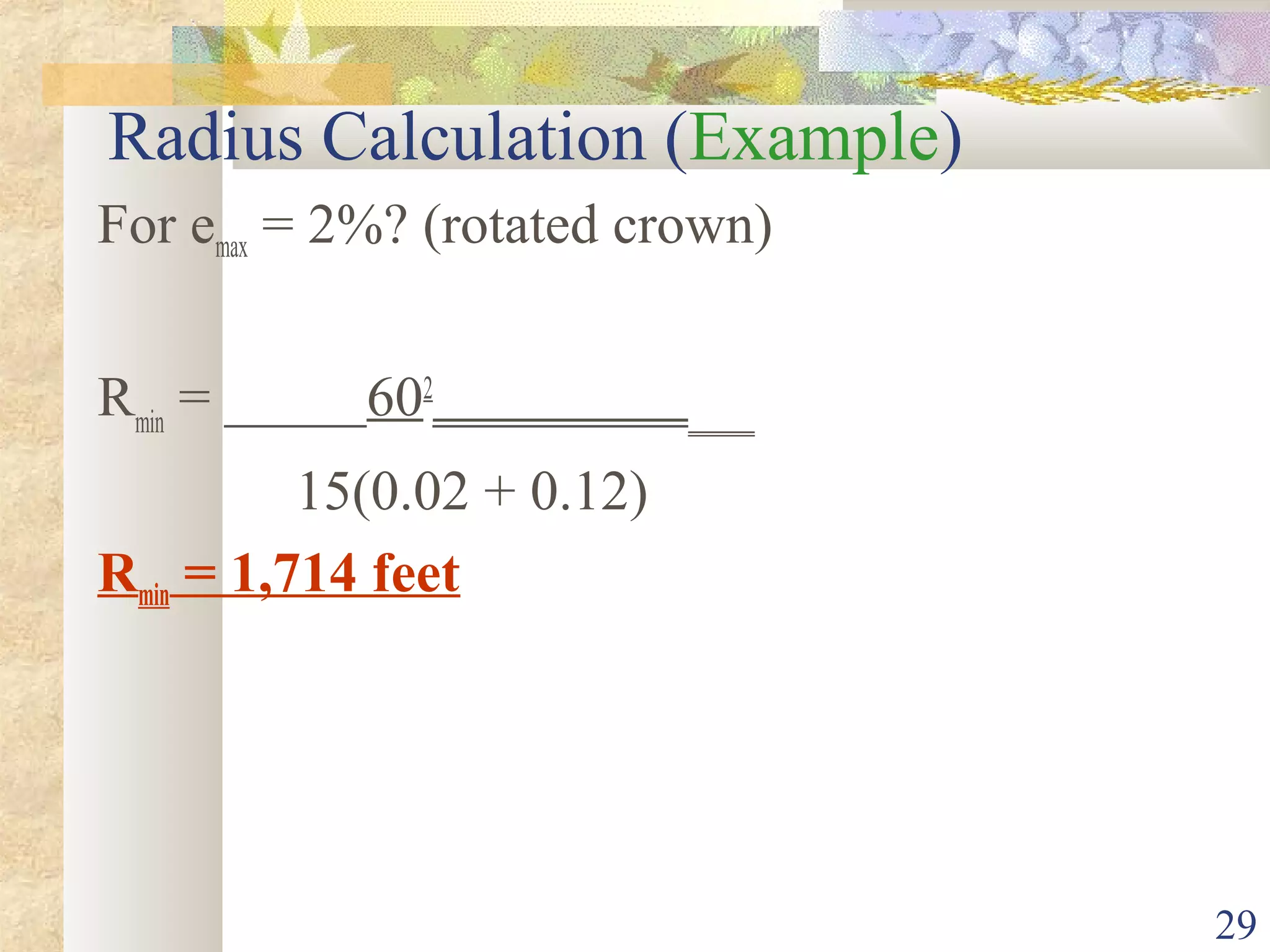
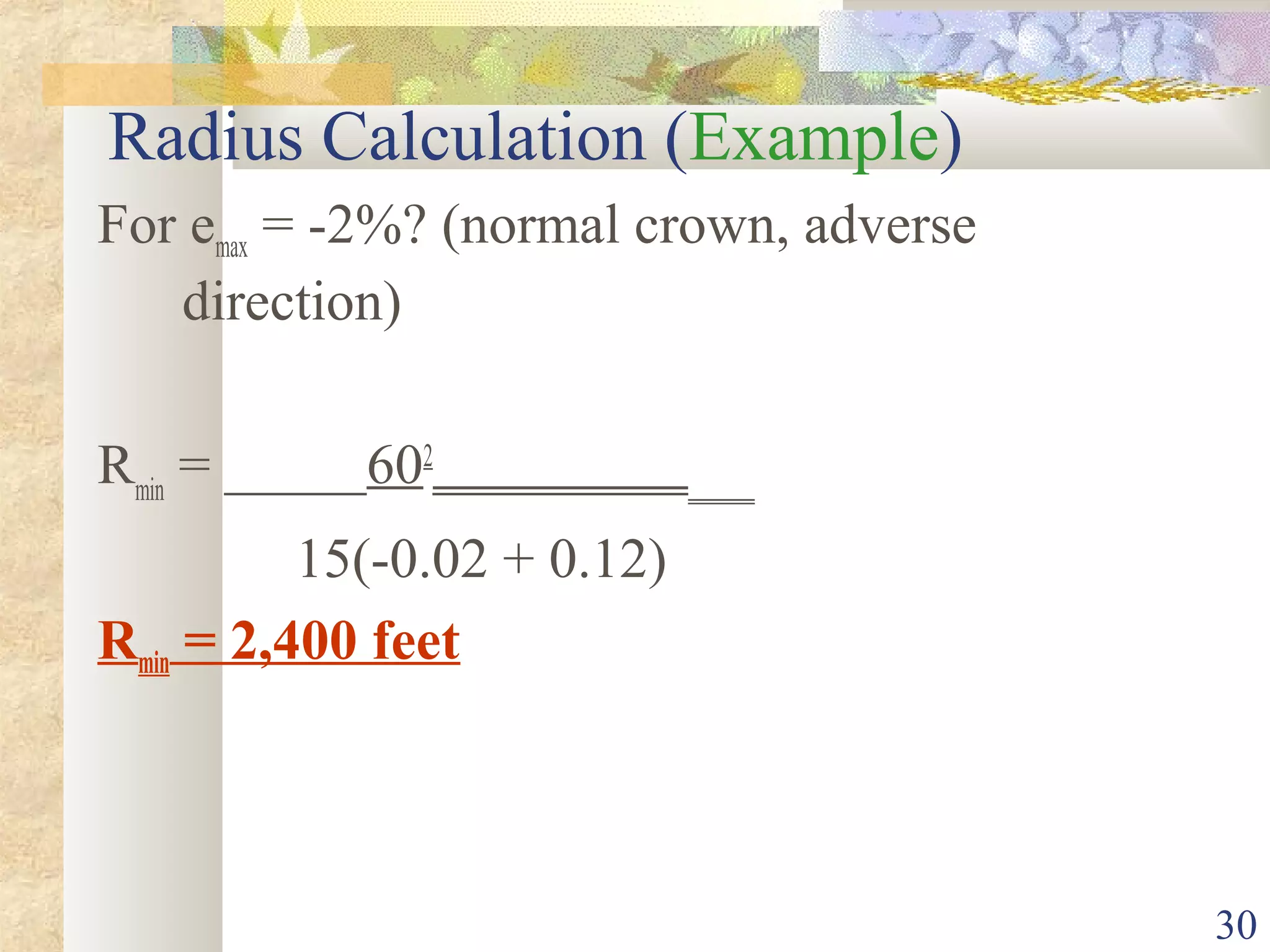
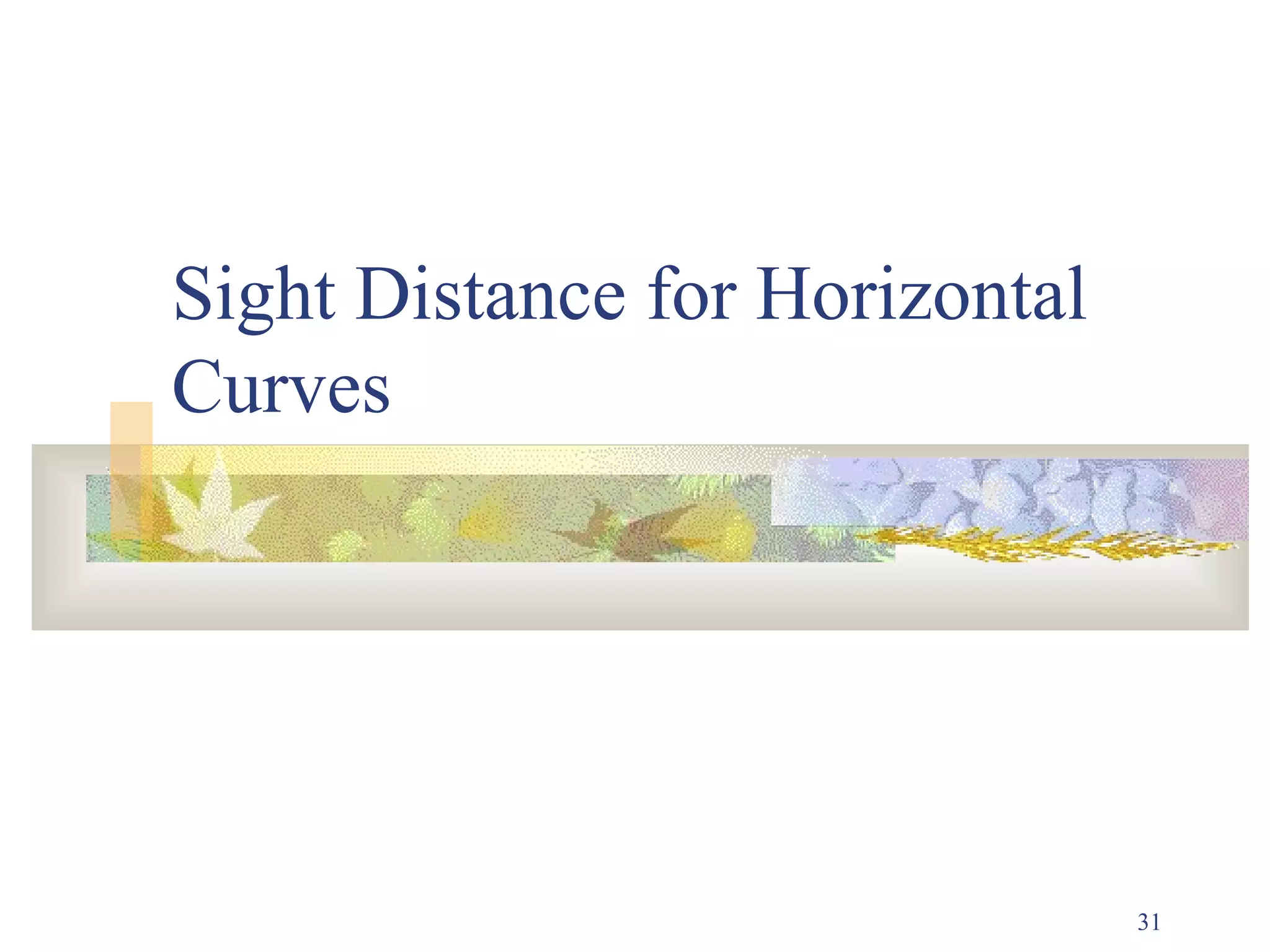
![32
Sight Distance for Horizontal Curves
Location of object along chord length that blocks
line of sight around the curve
m = R(1 – cos [28.65 S])
R
Where:
m = line of sight
S = stopping sight distance
R = radius](https://image.slidesharecdn.com/horizontalalignment08-160419091353/75/Horizontal-alignment-of-Roads-32-2048.jpg)
![33
Sight Obstruction on Horizontal
Curves
Assume S is the SSD equal to chord AT
Angle subtended at centre of circle by arc AT
is 2θ in degree then
Total circumference perimeter (πR)
S / πR = 2θ / 180
S = 2R θπ / 180
θ = S 180/ 2R π = 28.65 (S) / R
R-M/R = cos θ
M = R [1 – cos 28.65 (S) / R ]
θR
M
A T
B
T
O
O
θ
B](https://image.slidesharecdn.com/horizontalalignment08-160419091353/75/Horizontal-alignment-of-Roads-33-2048.jpg)
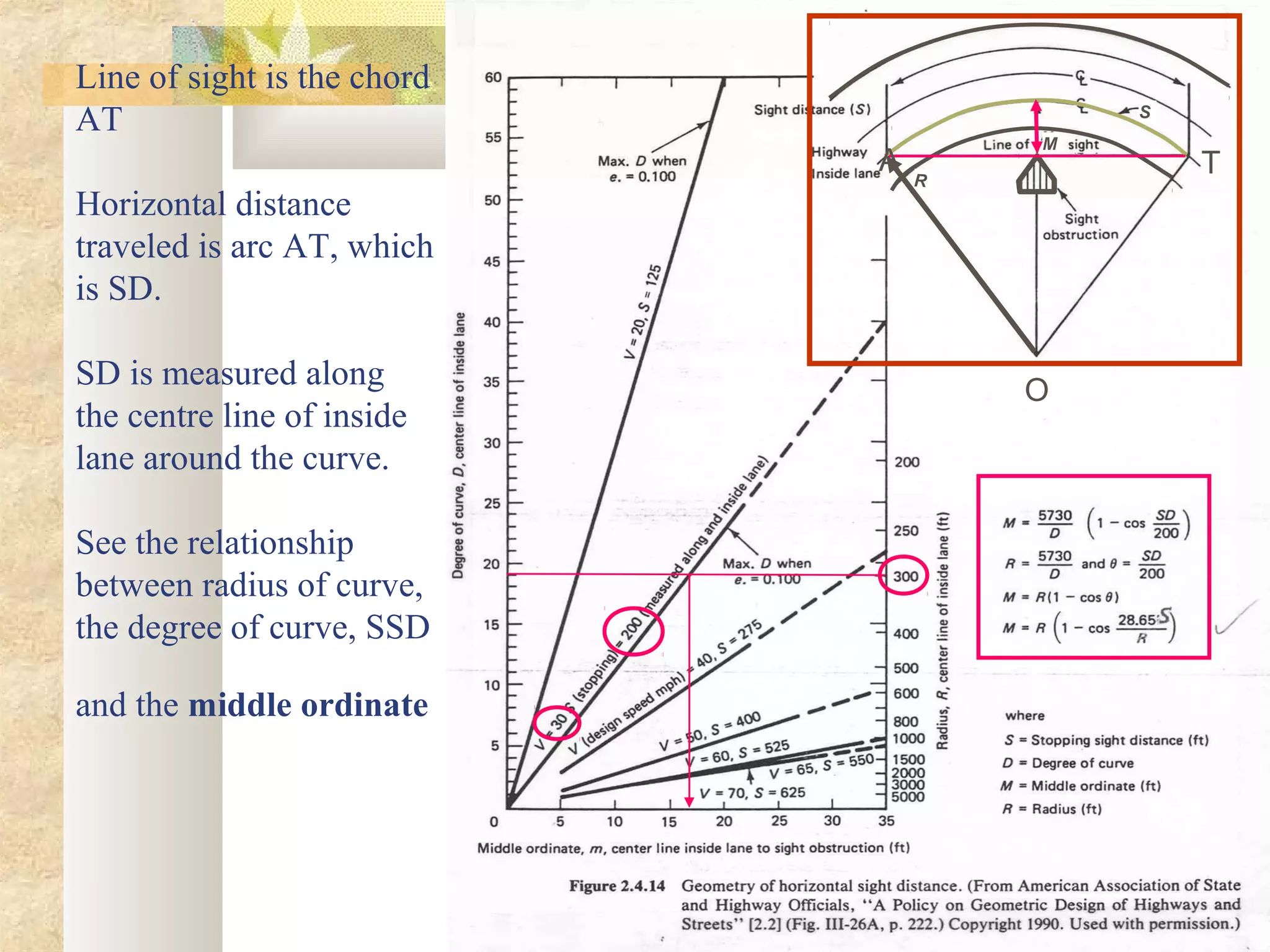
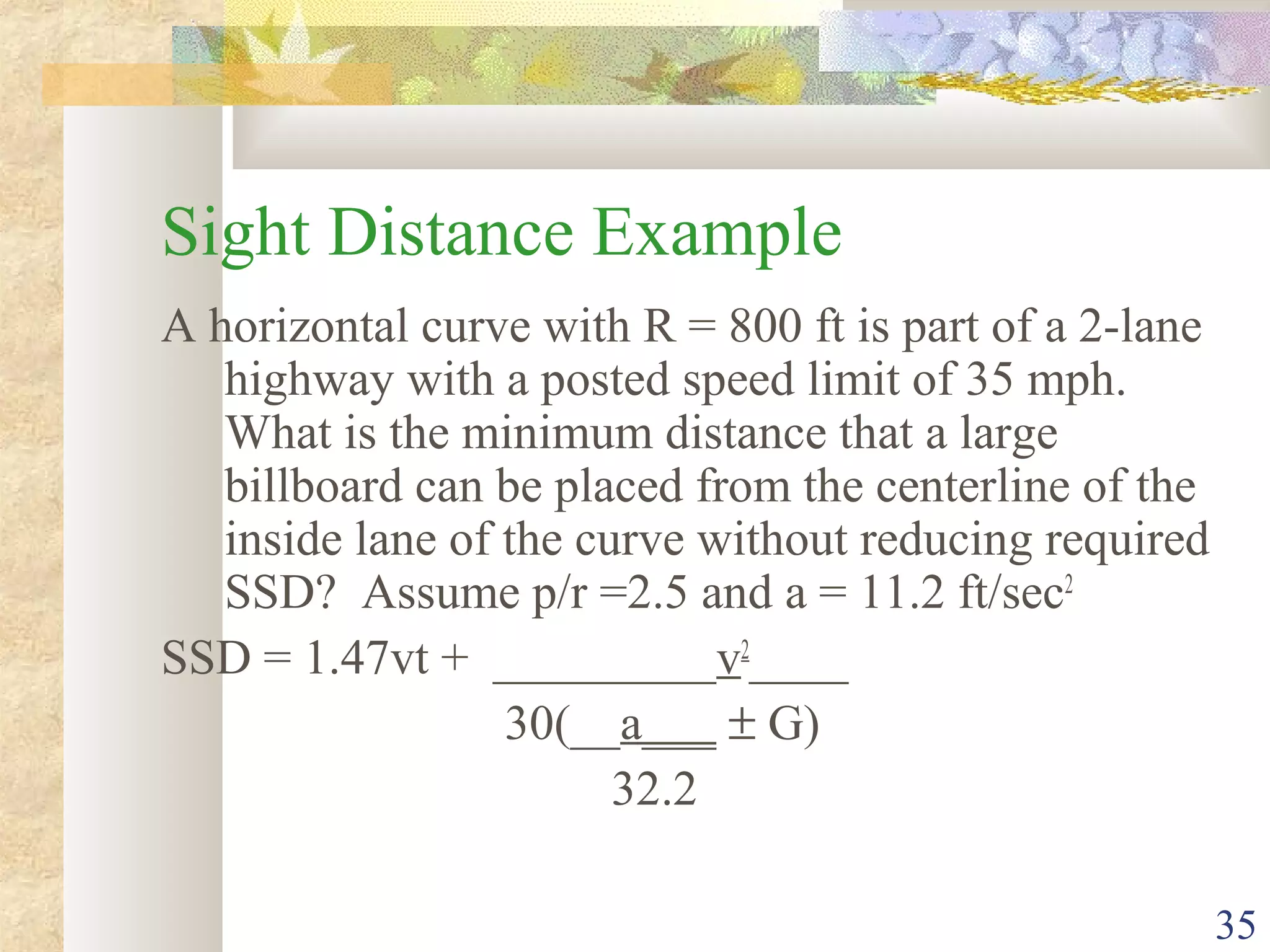
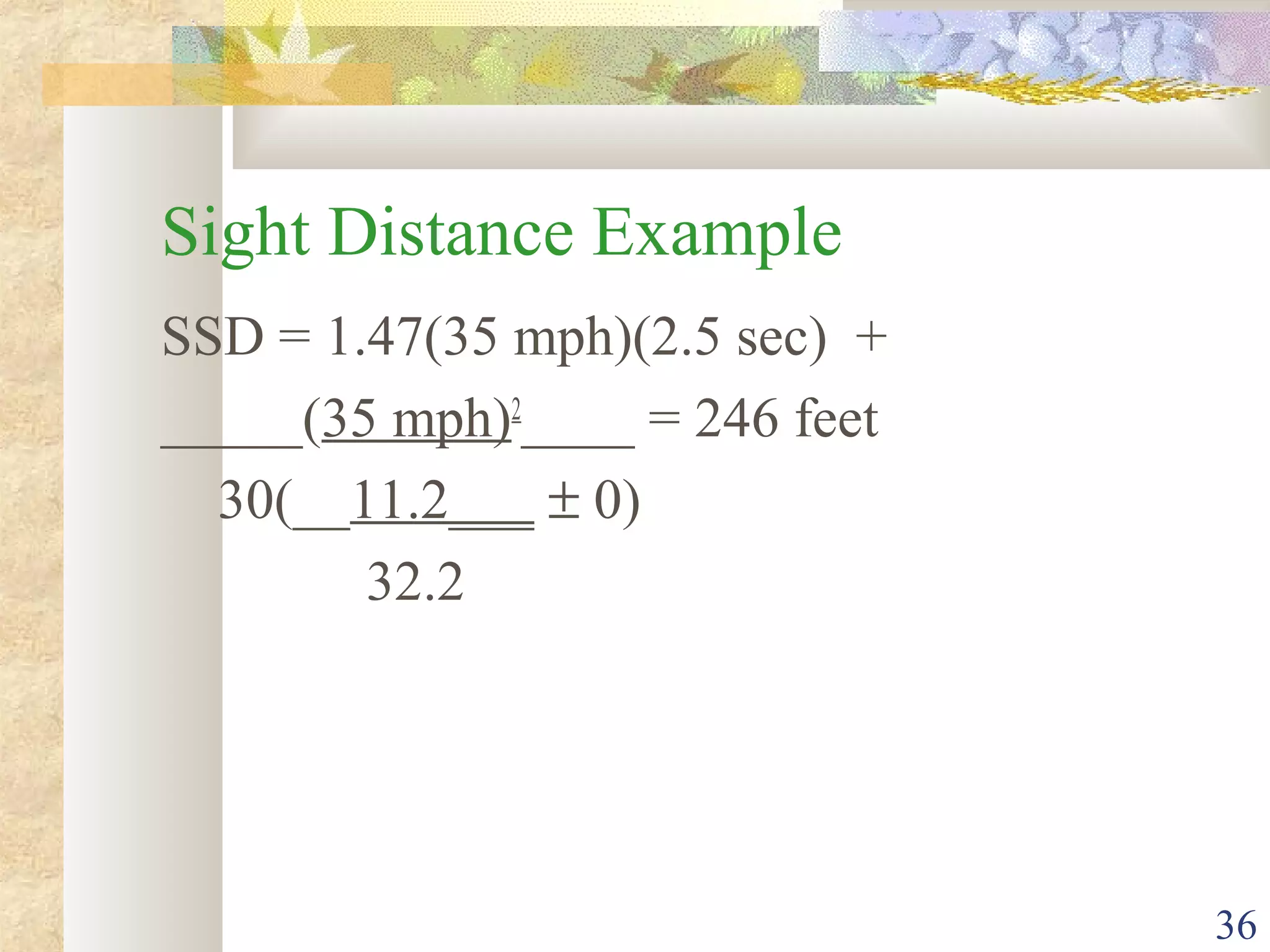
![37
Sight Distance Example
m = R(1 – cos [28.65 S])
R
m = 800 (1 – cos [28.65 {246}]) = 9.43 feet
800
(in radians not degrees)](https://image.slidesharecdn.com/horizontalalignment08-160419091353/75/Horizontal-alignment-of-Roads-37-2048.jpg)

